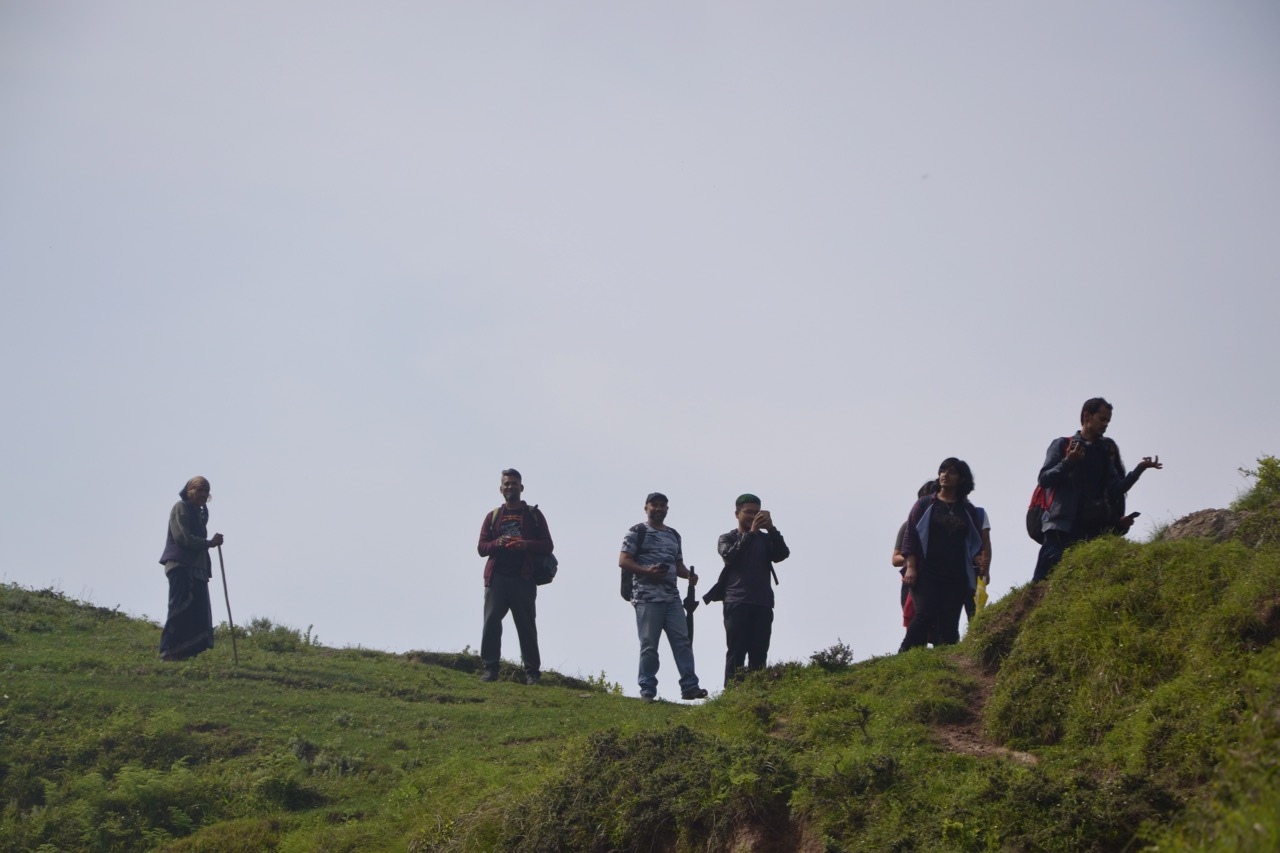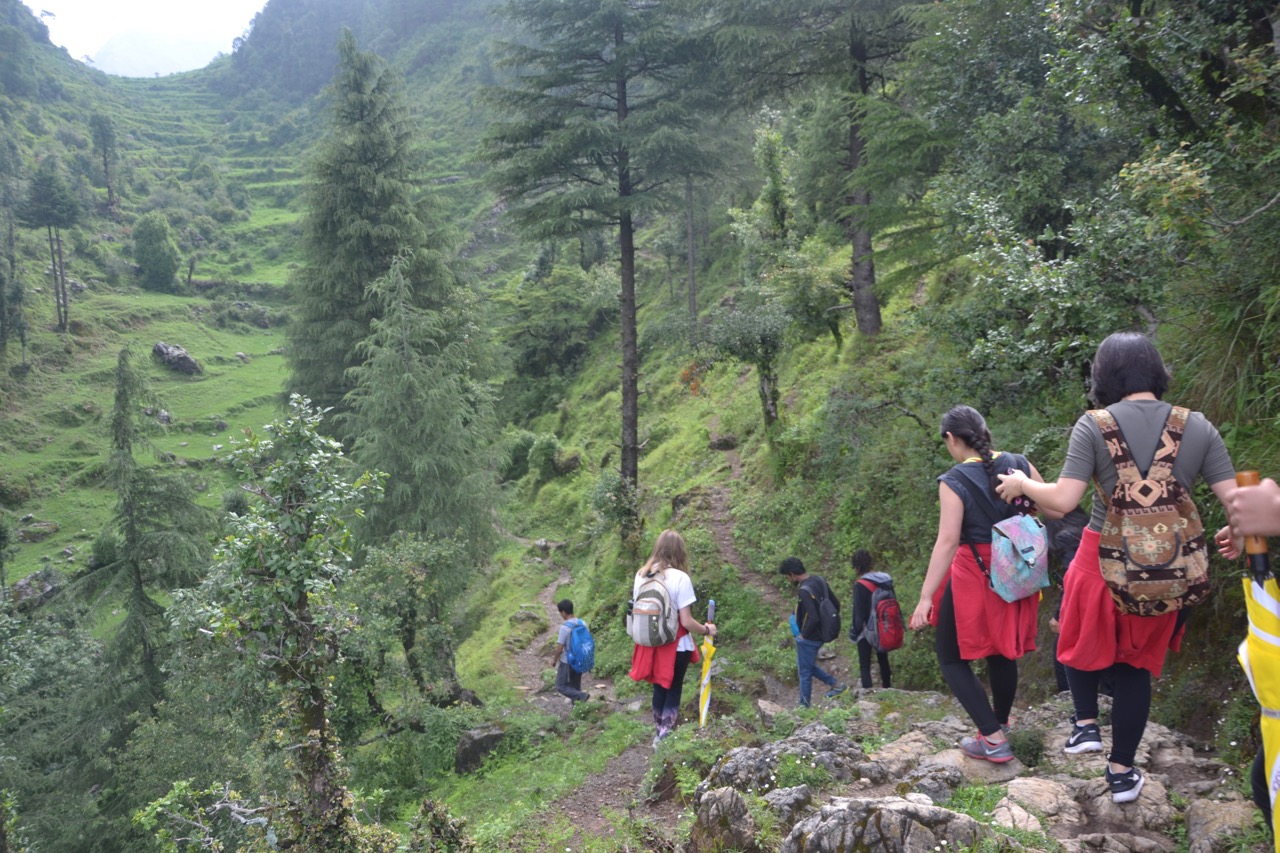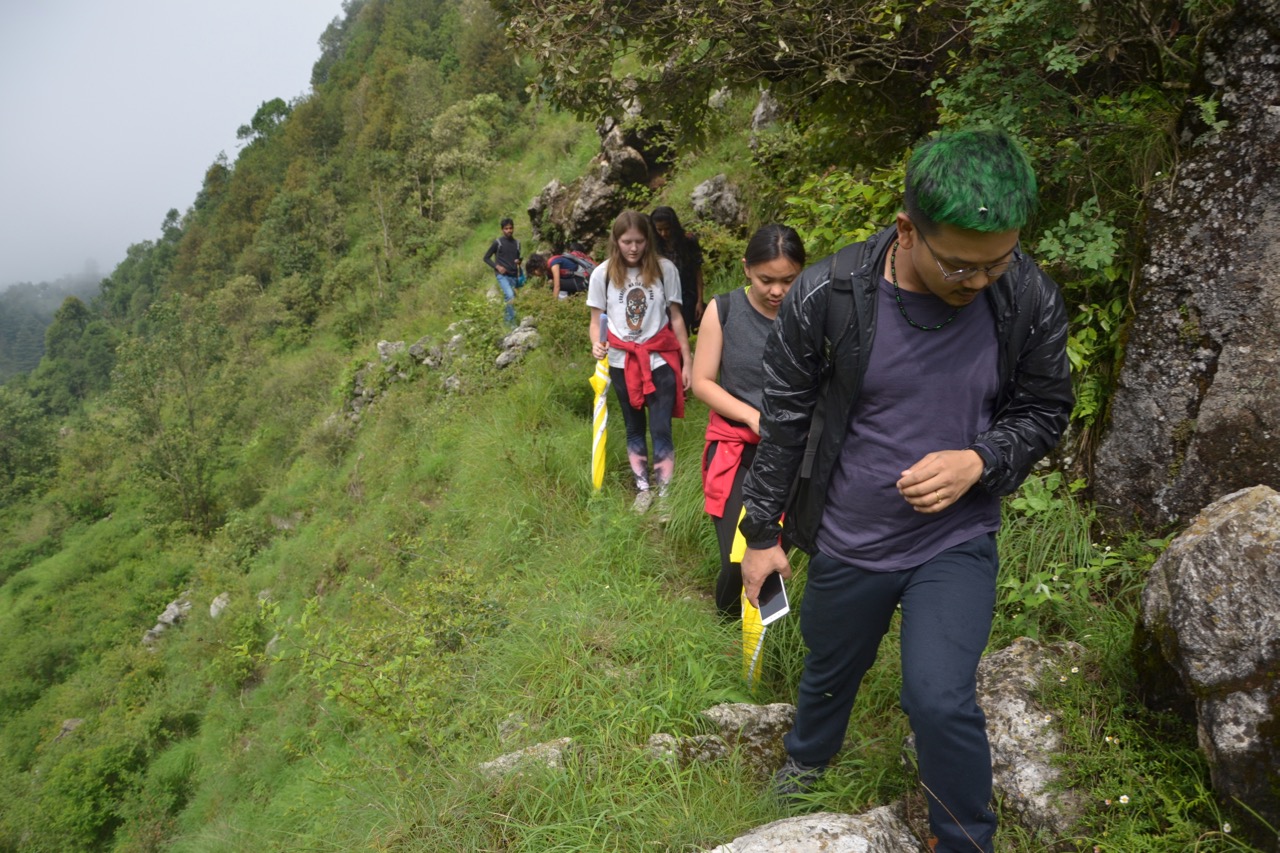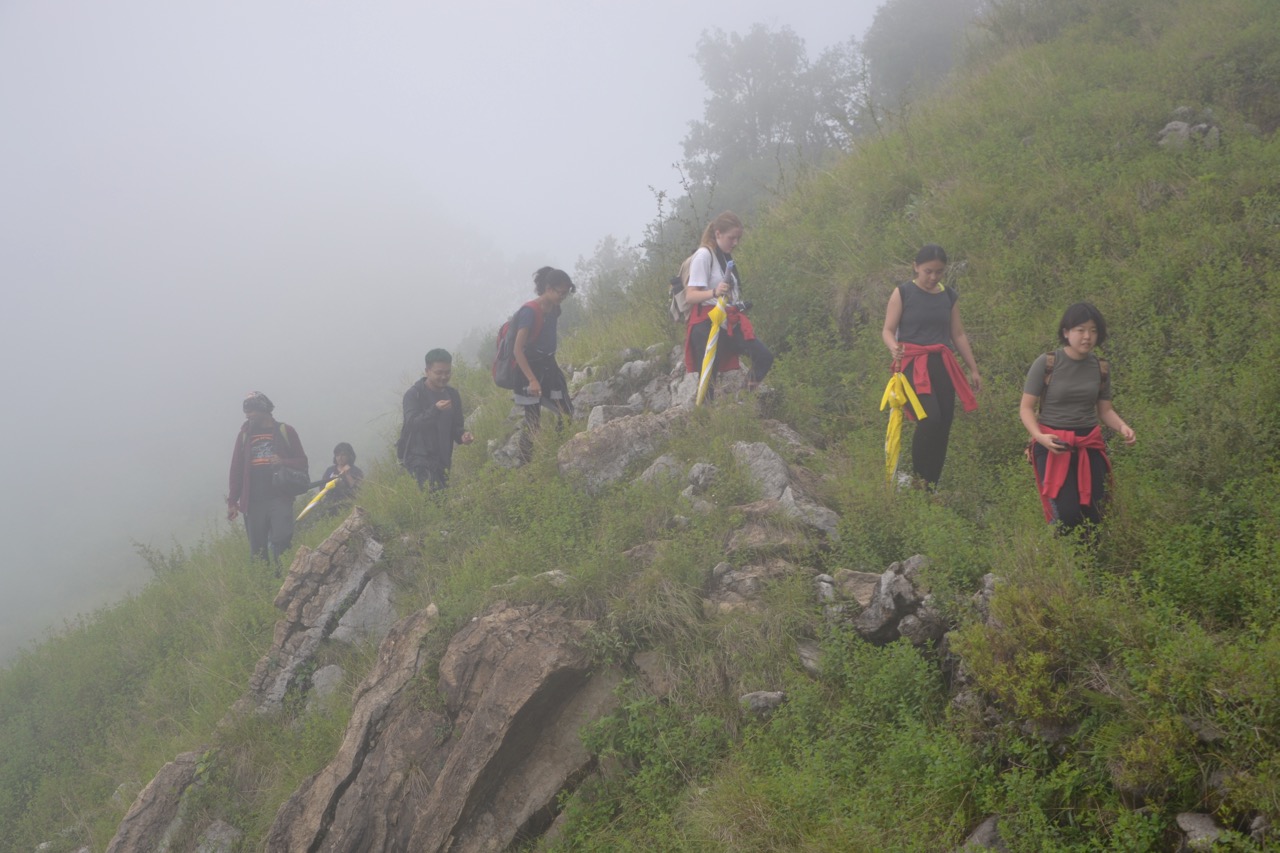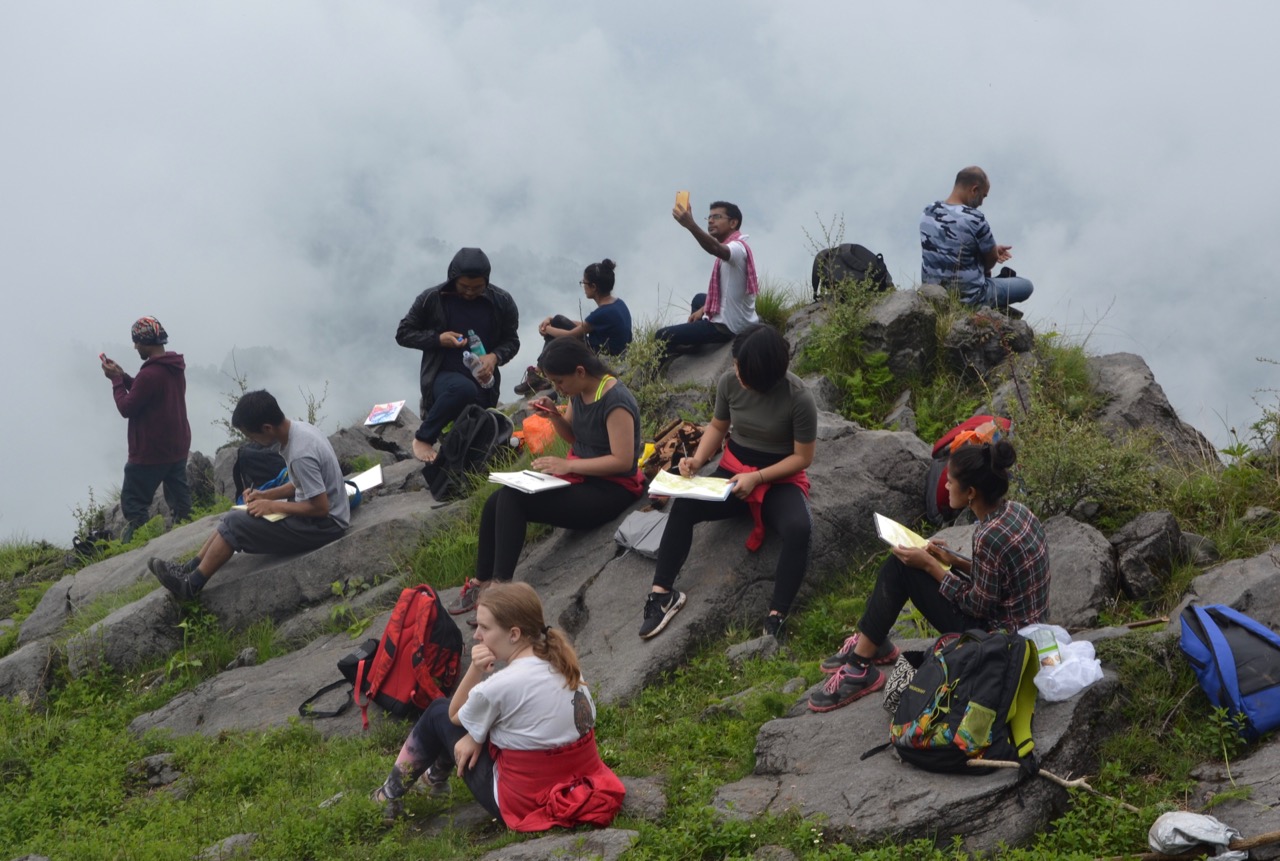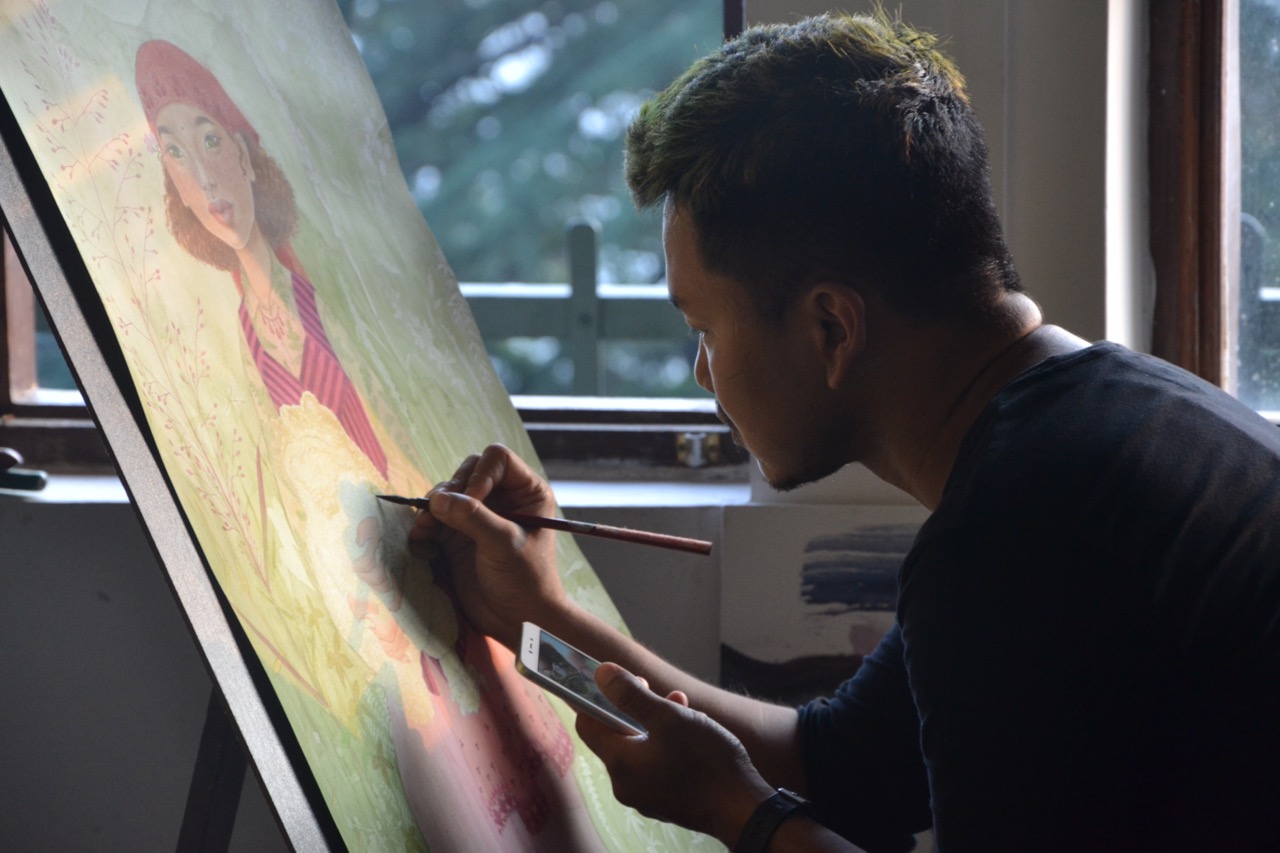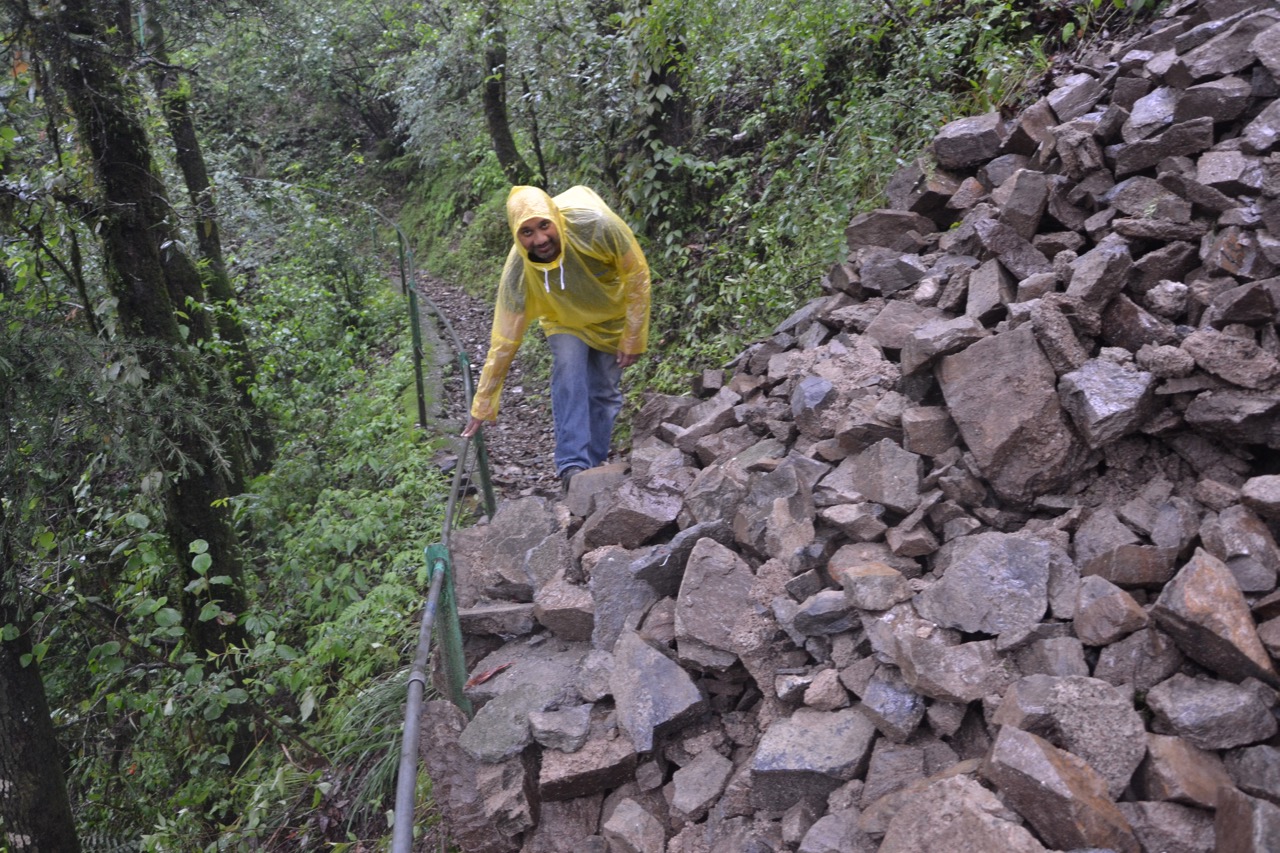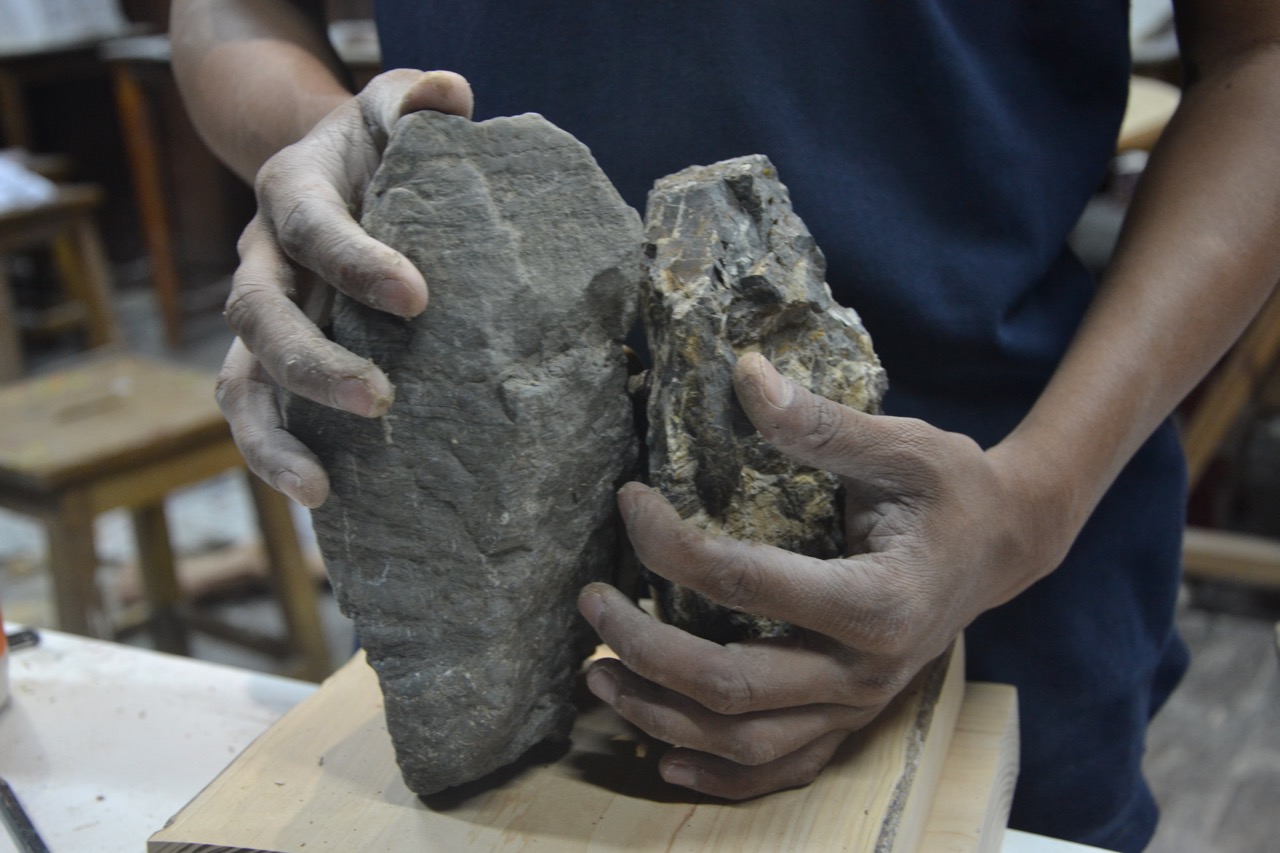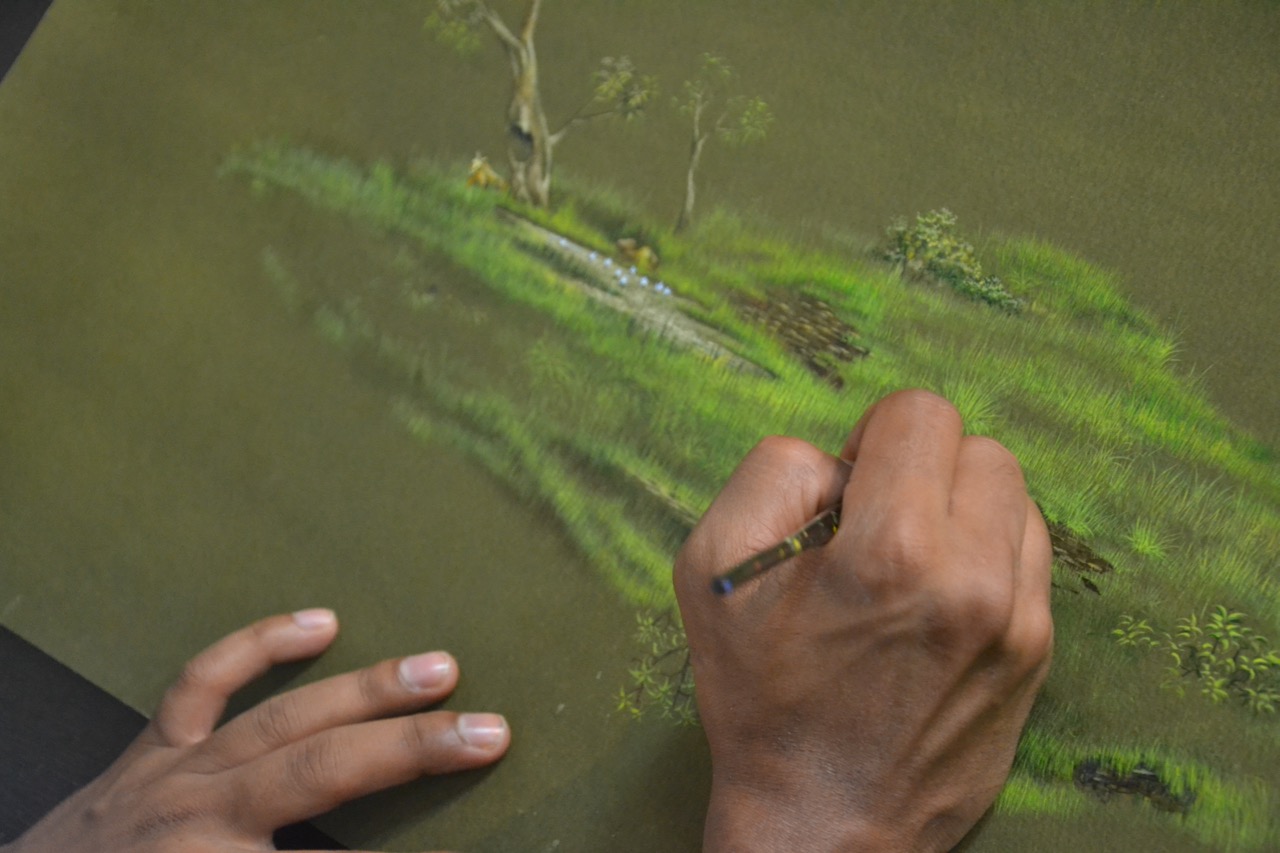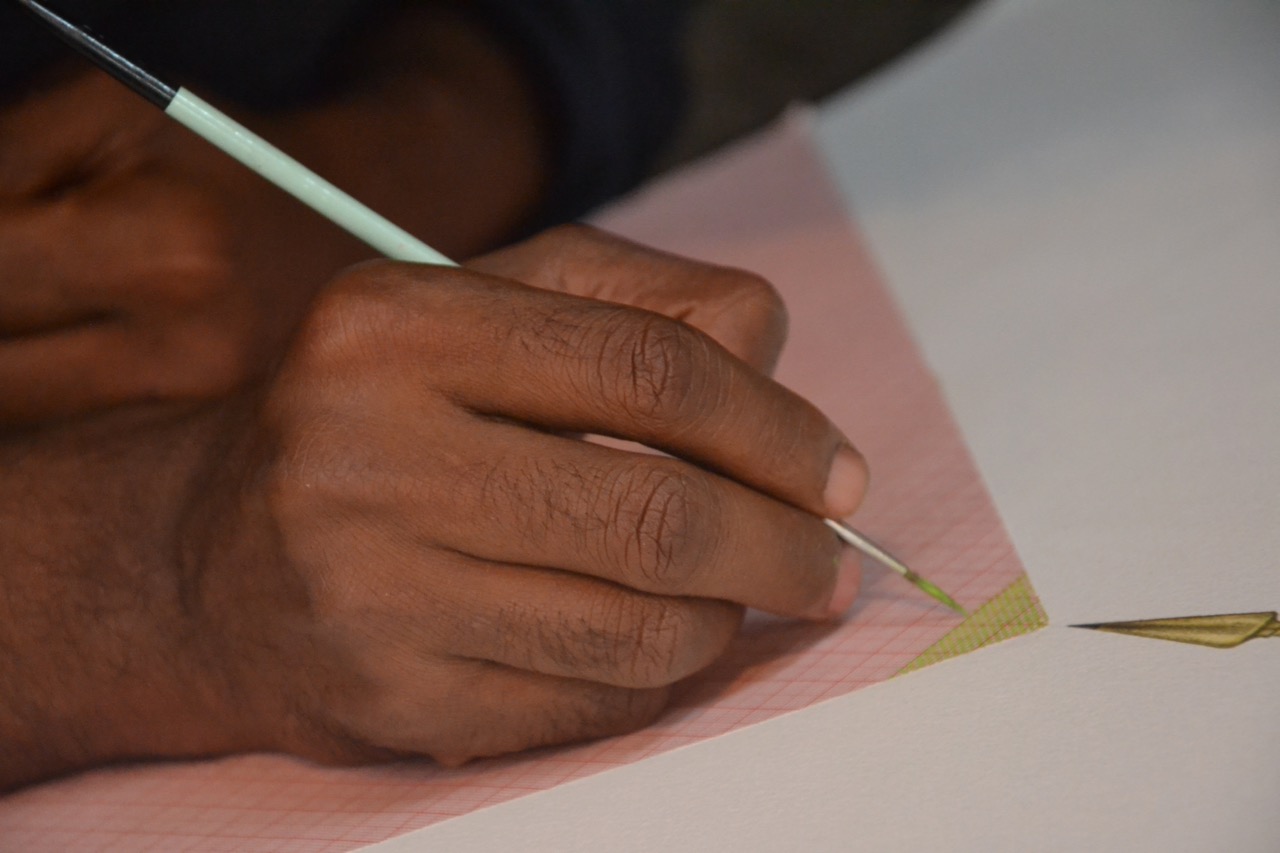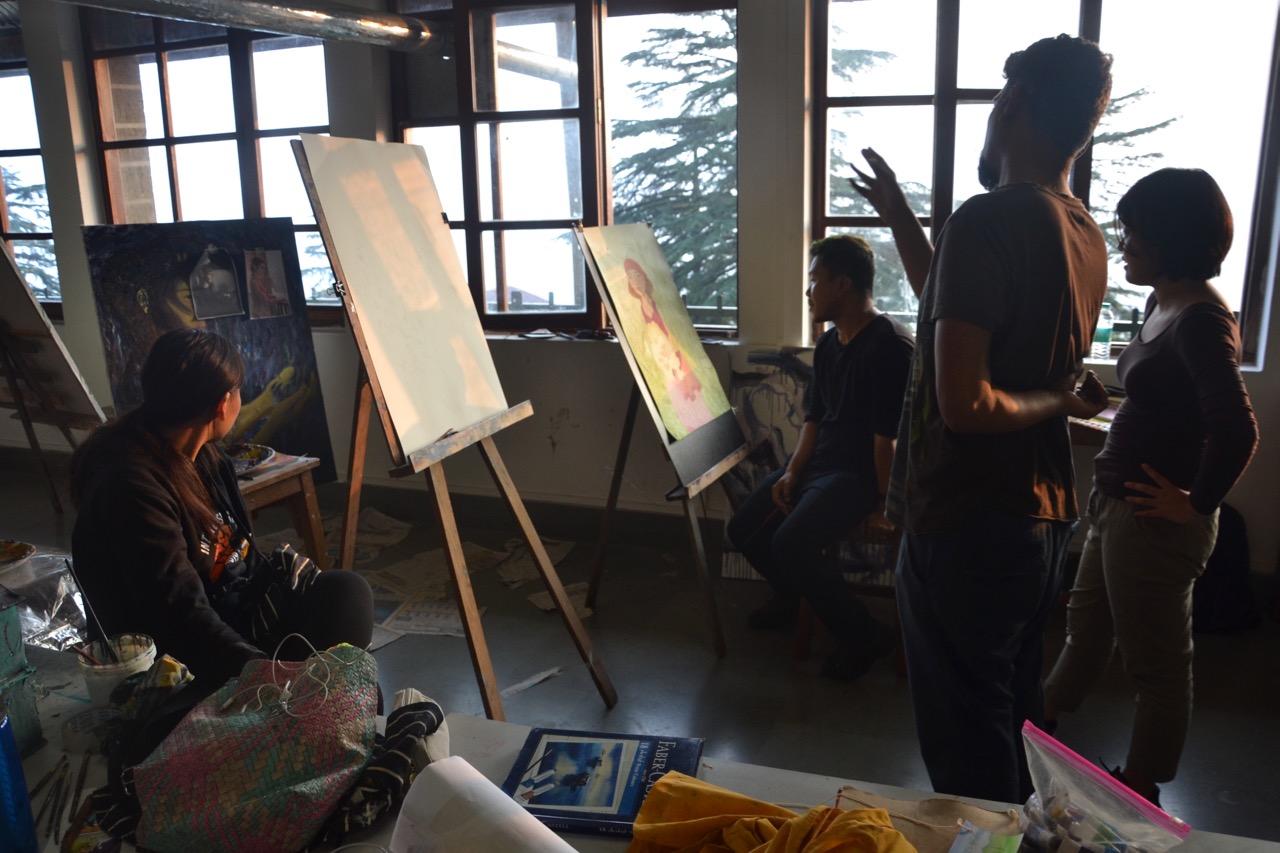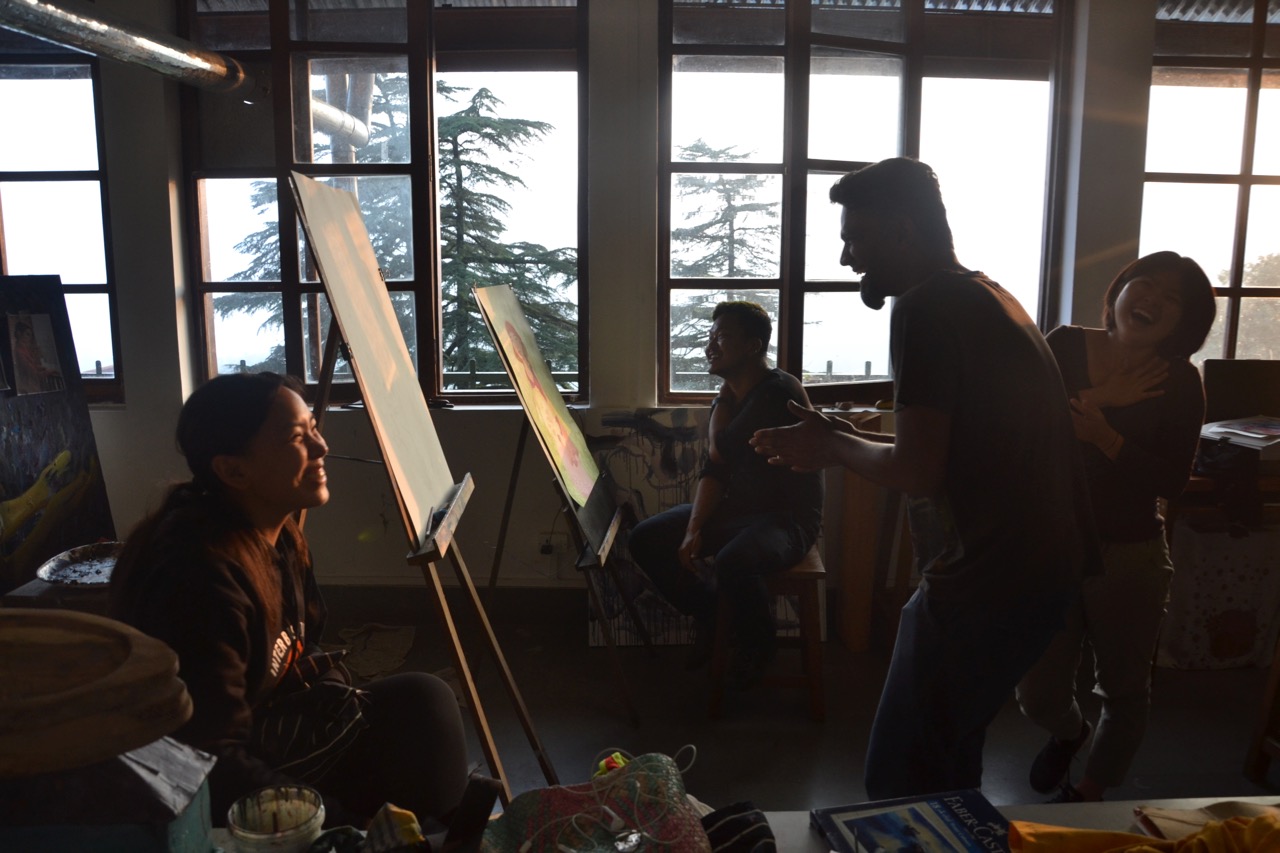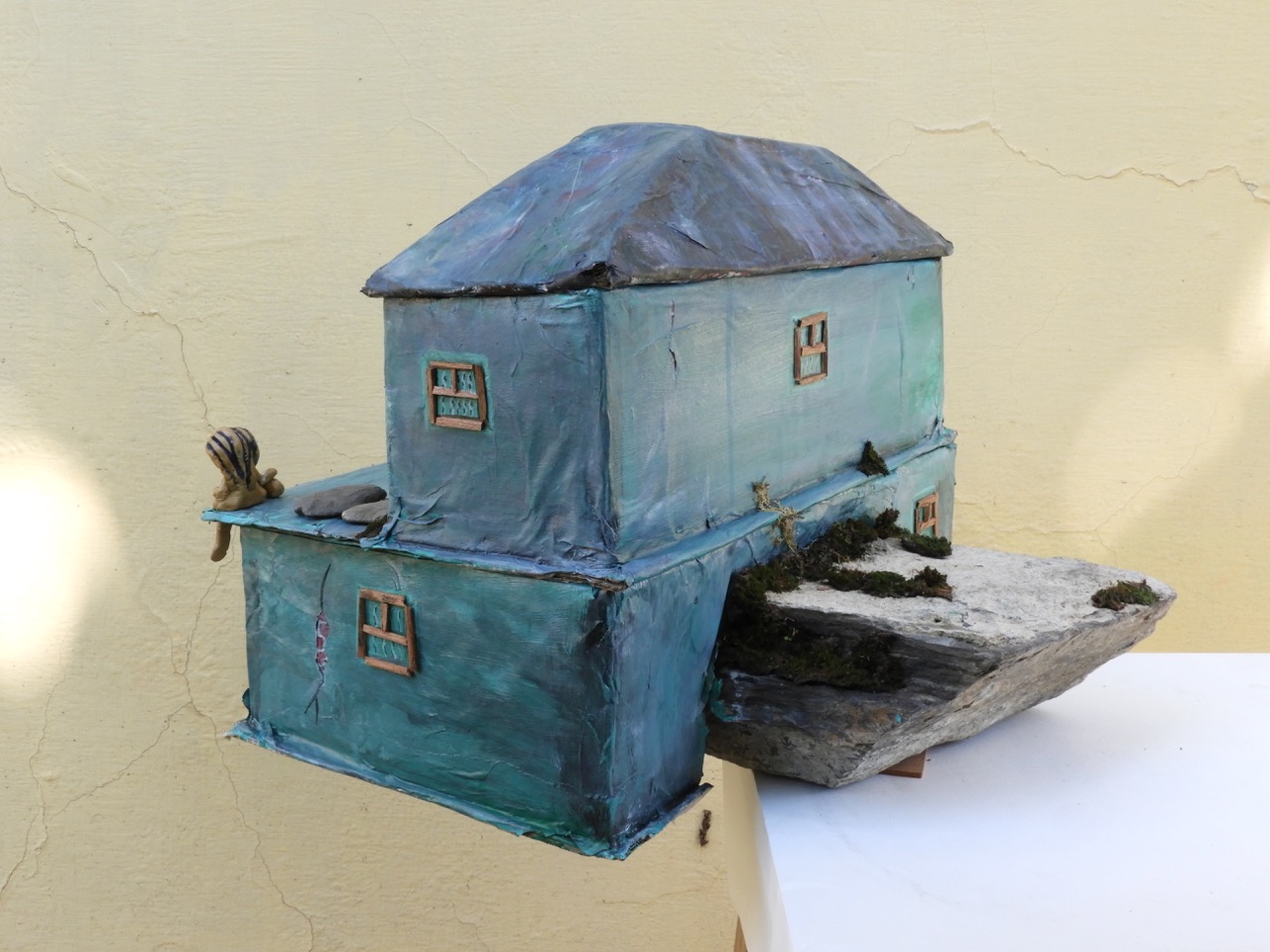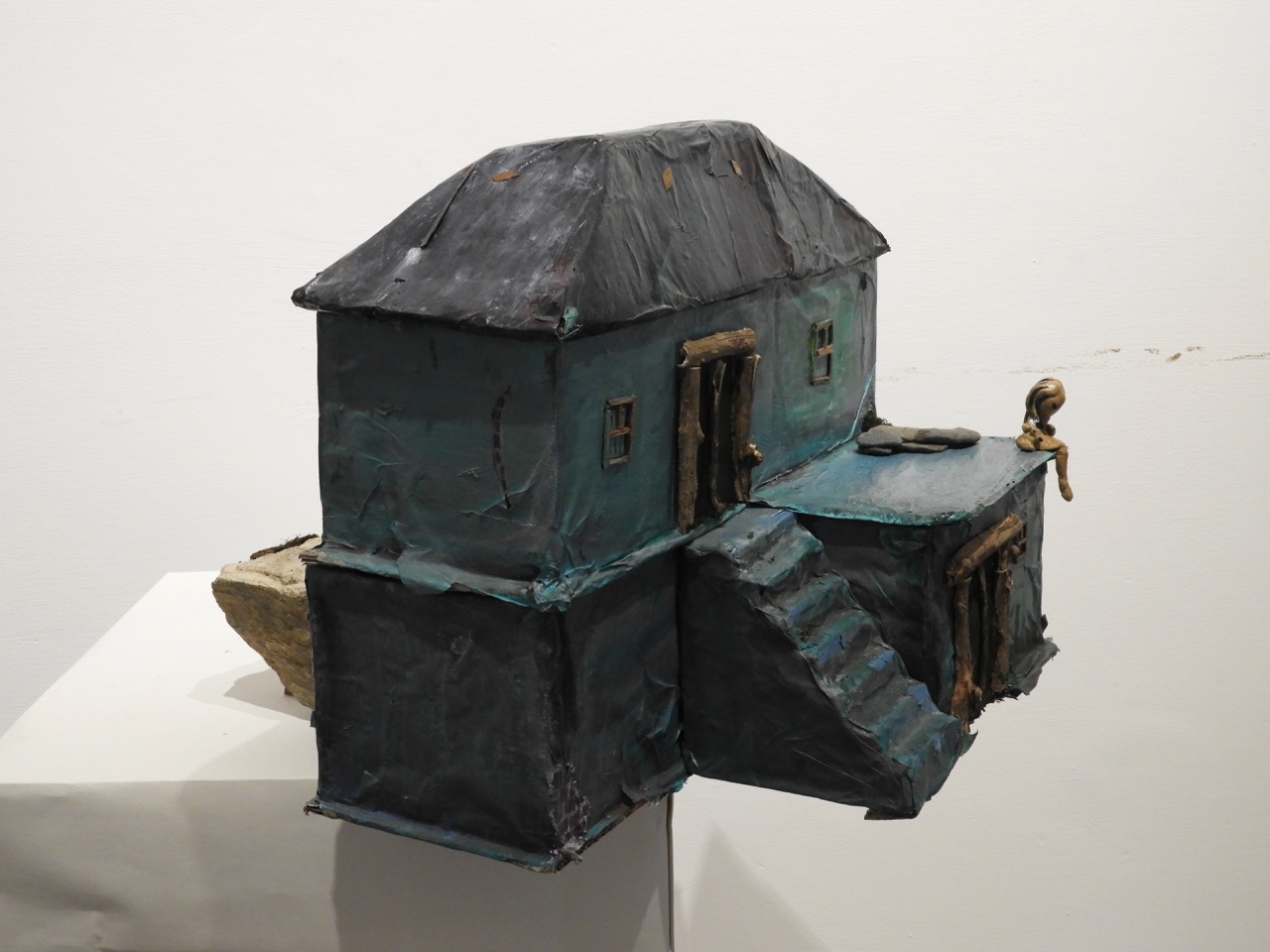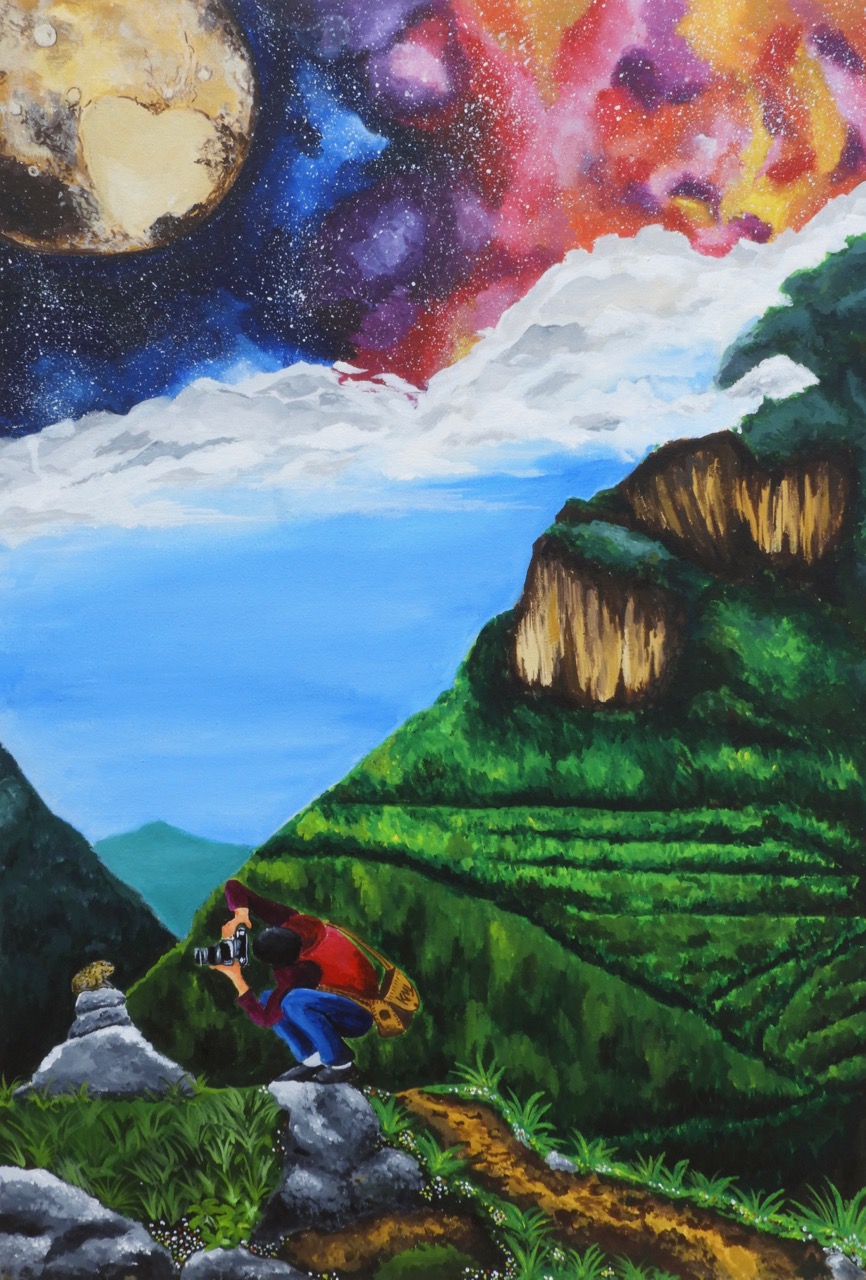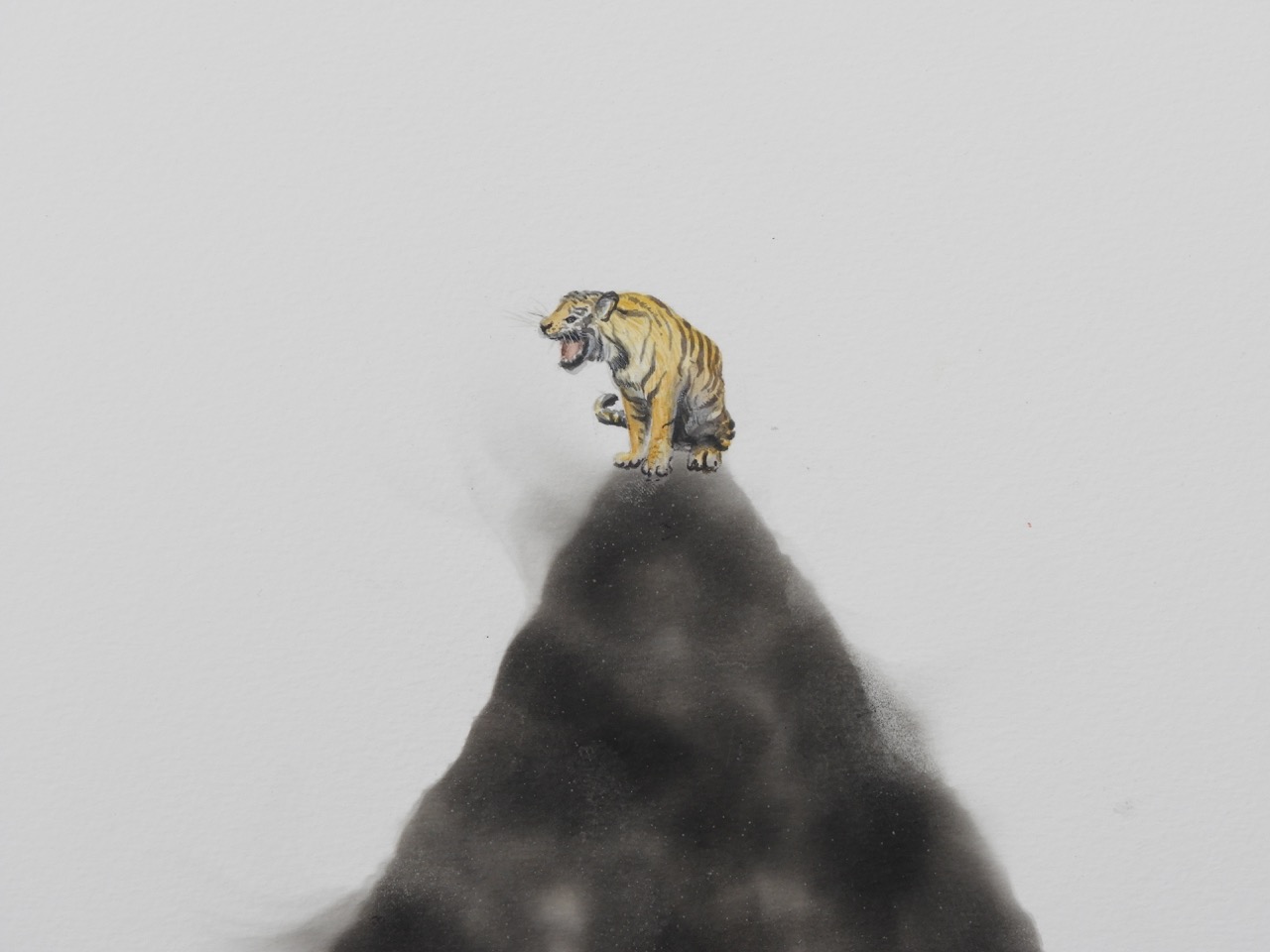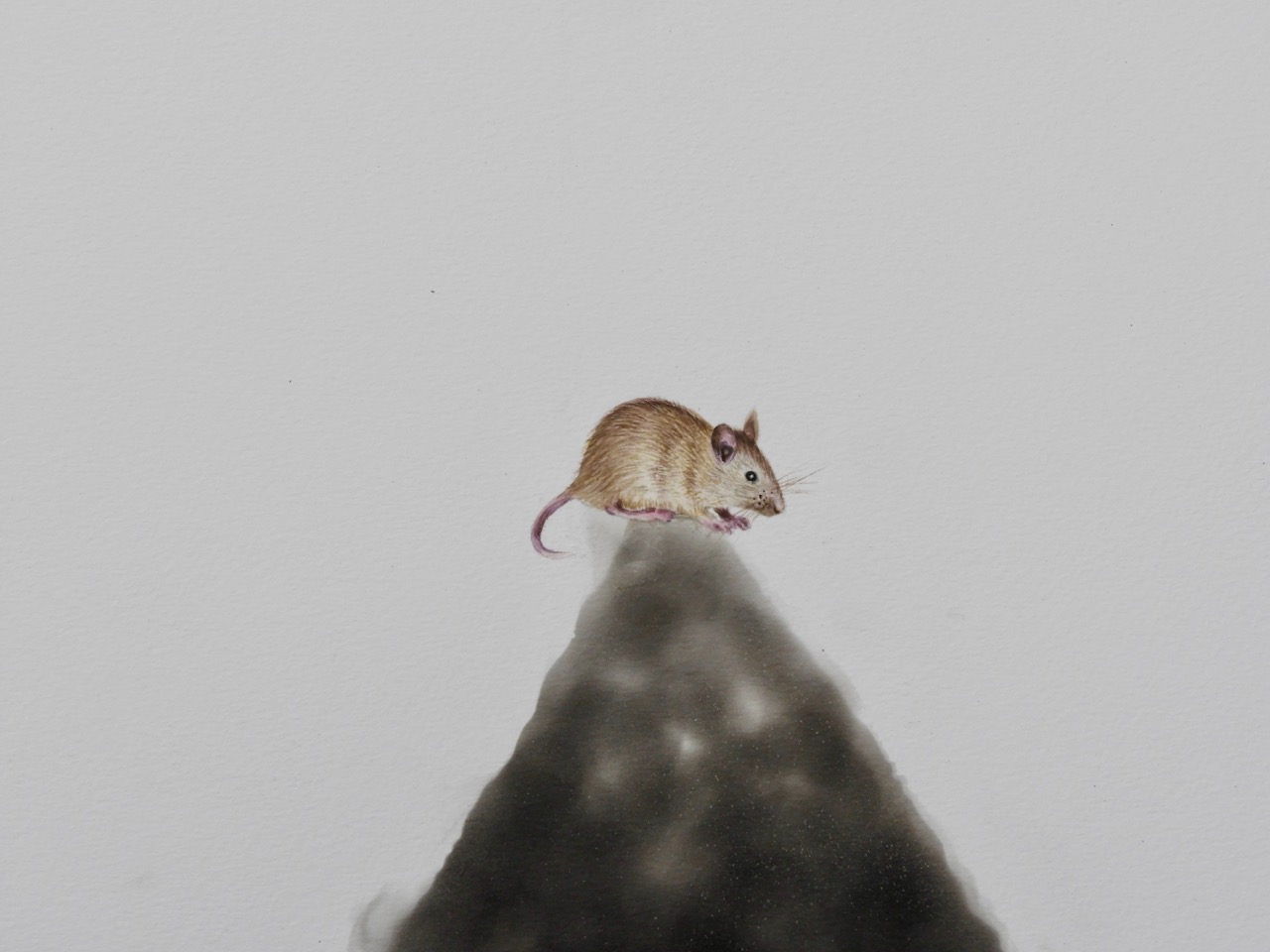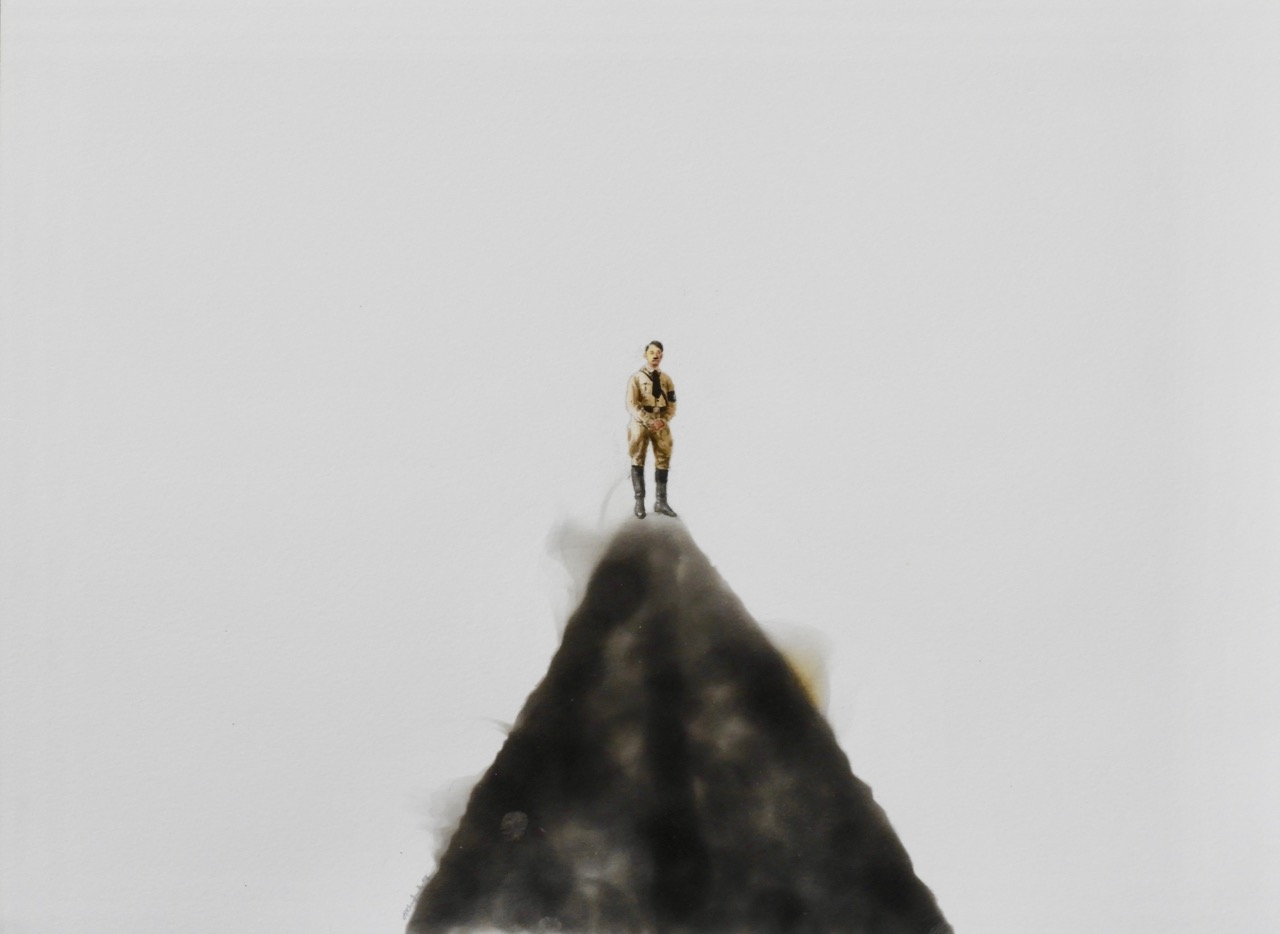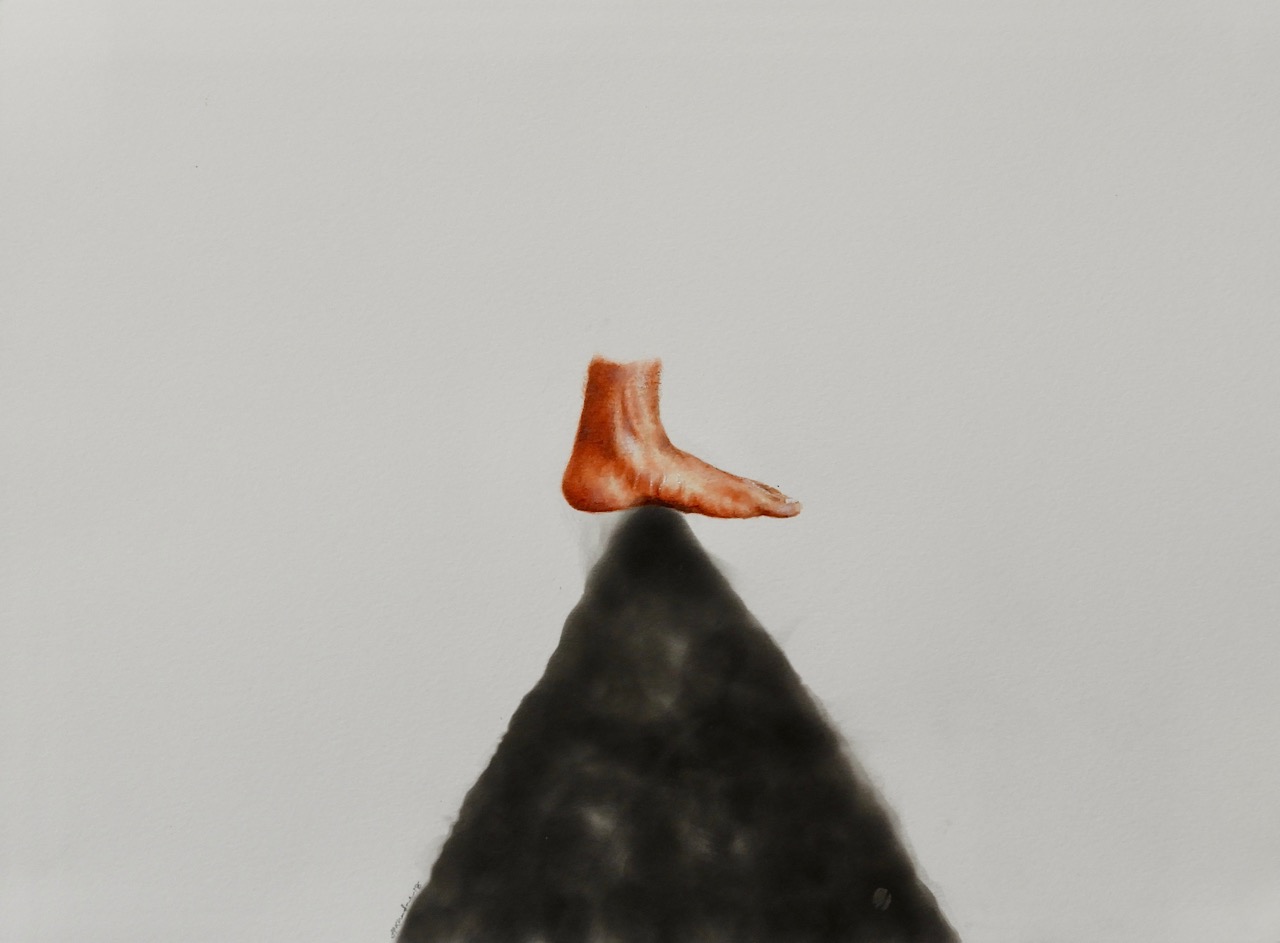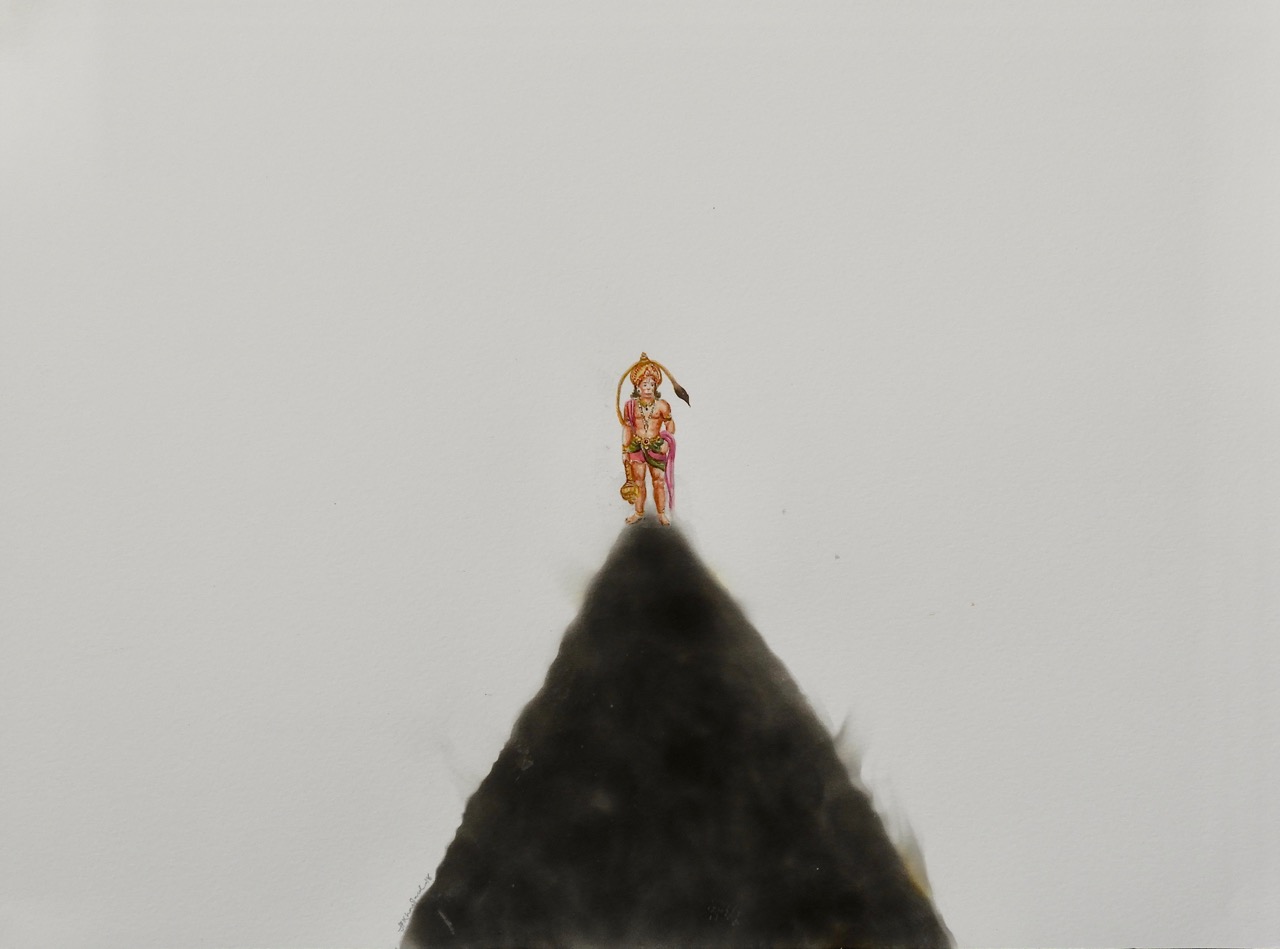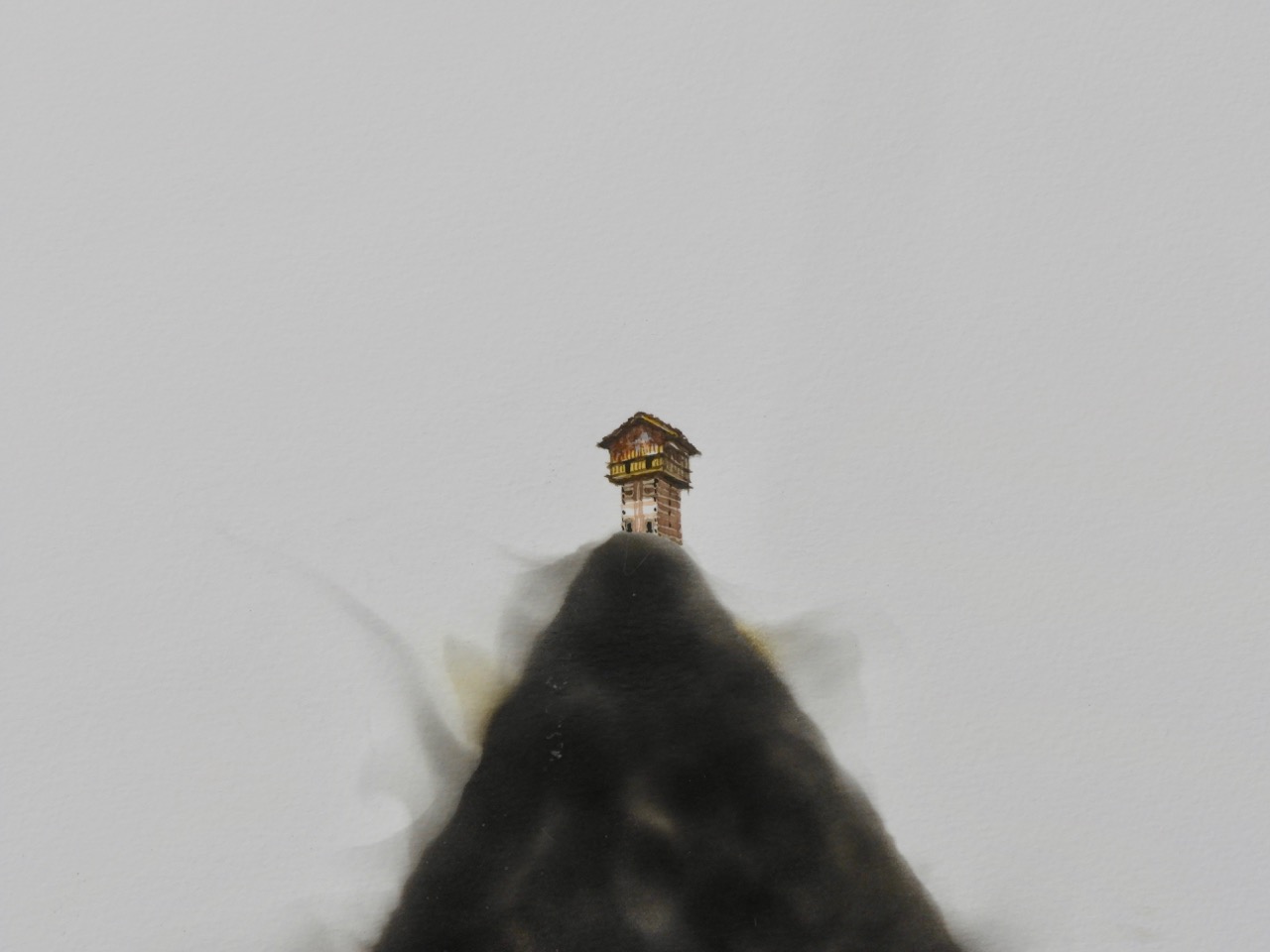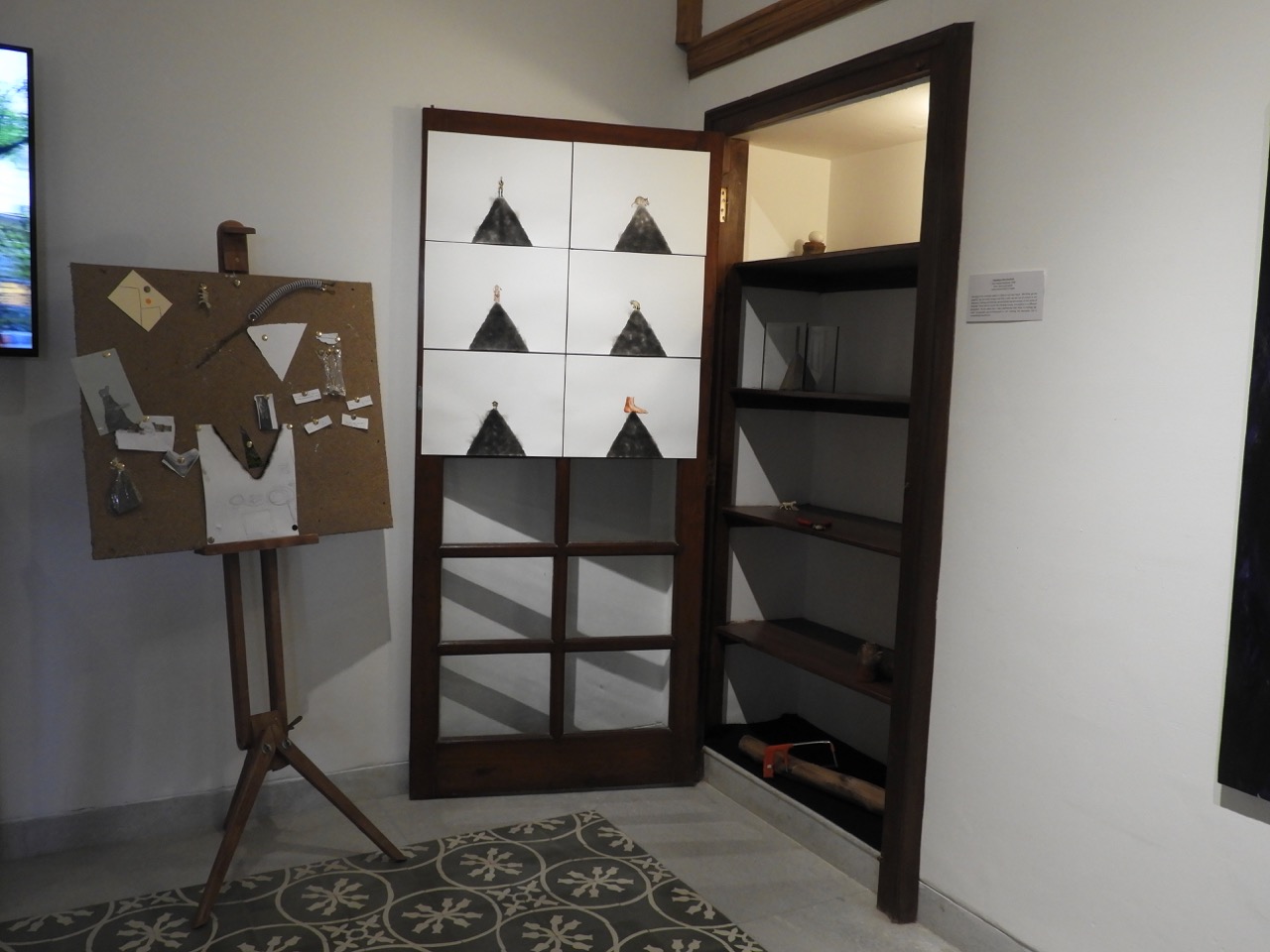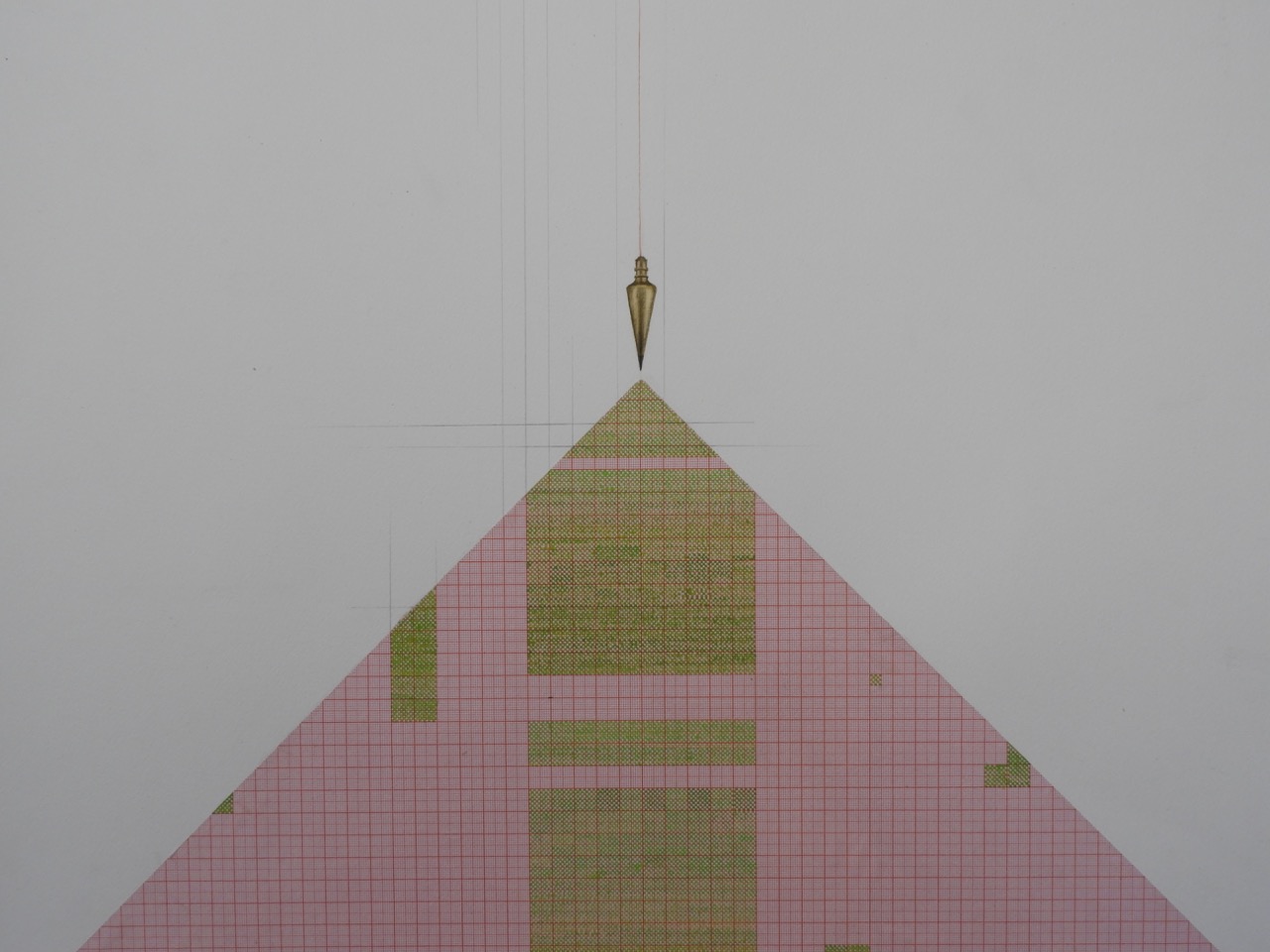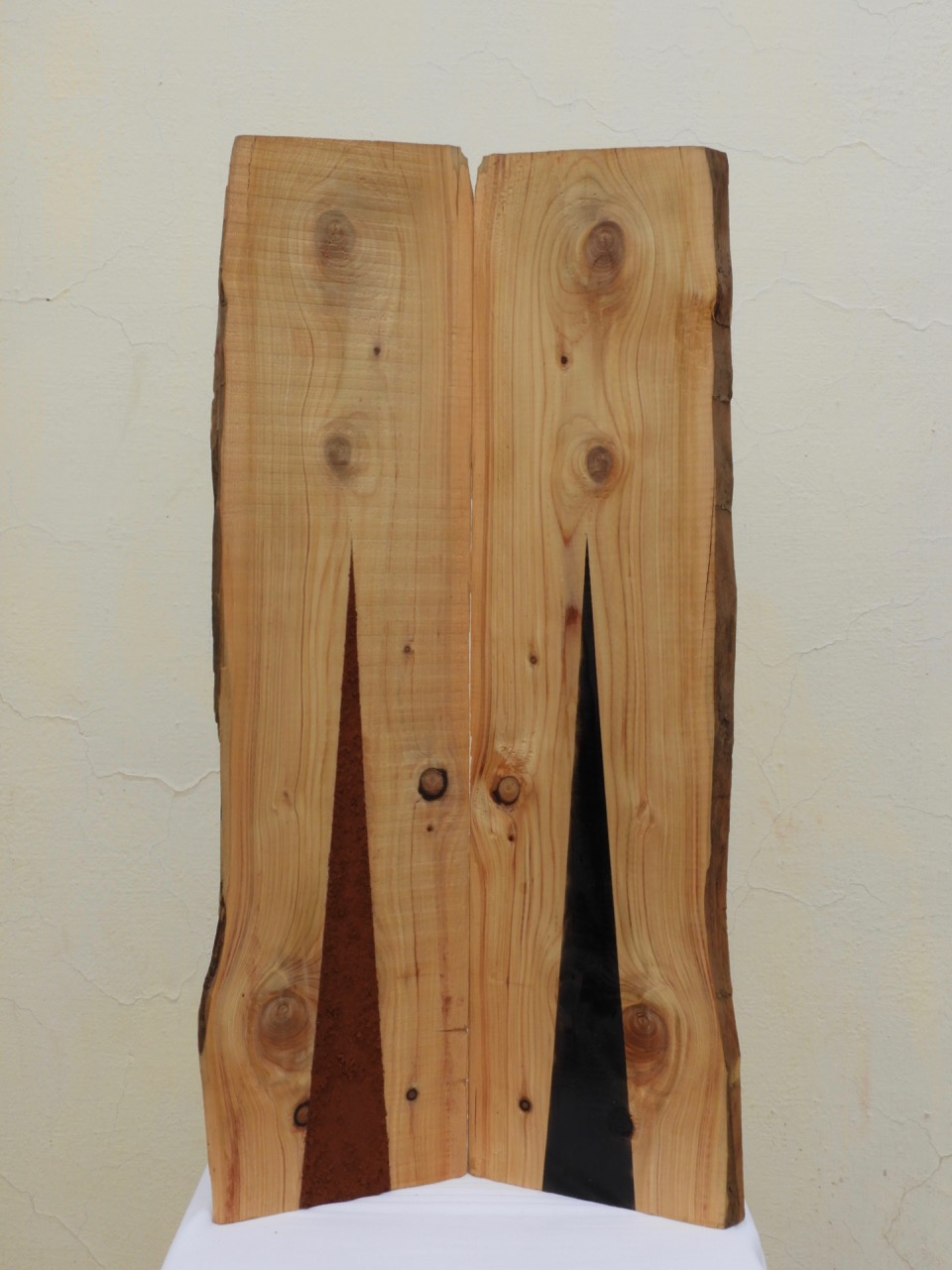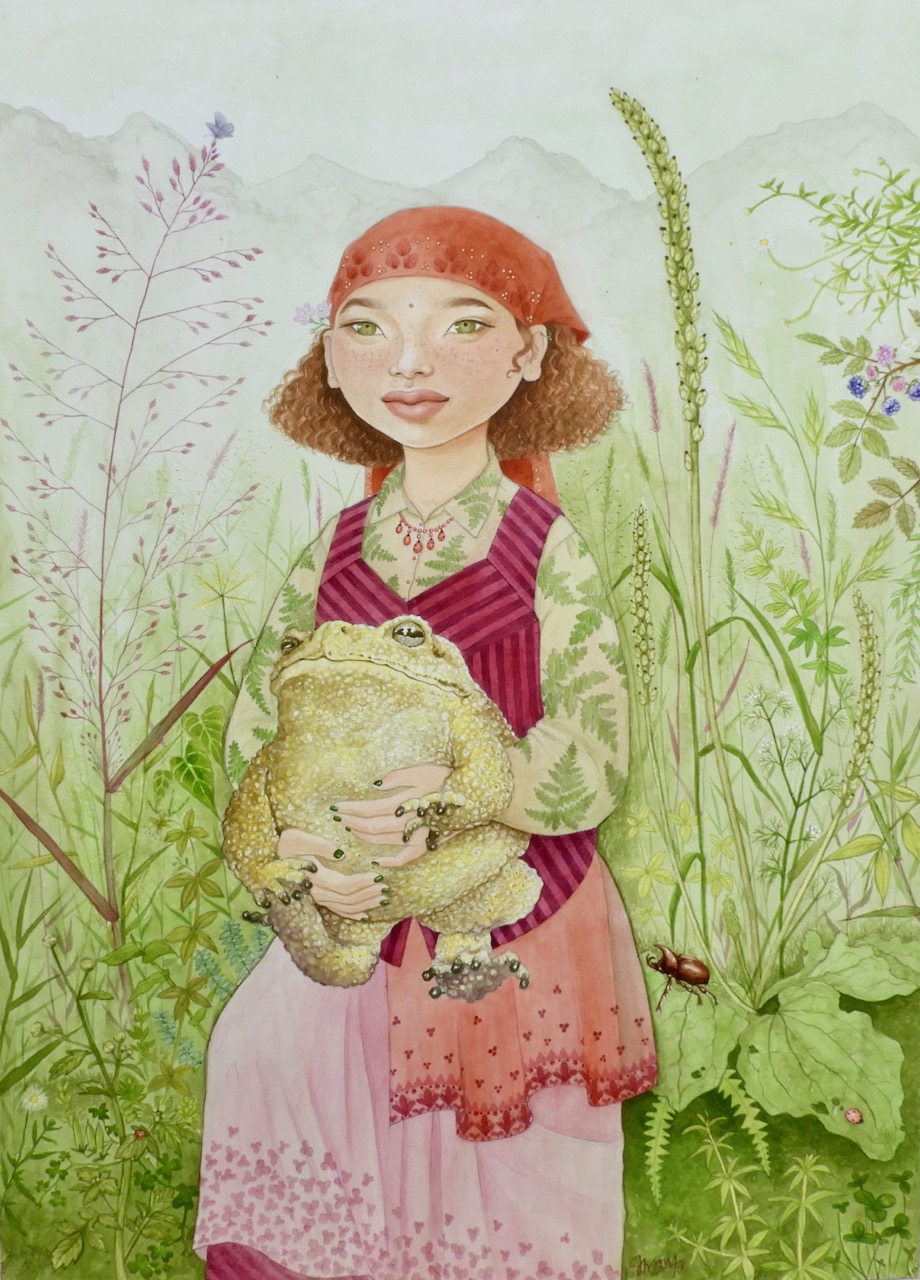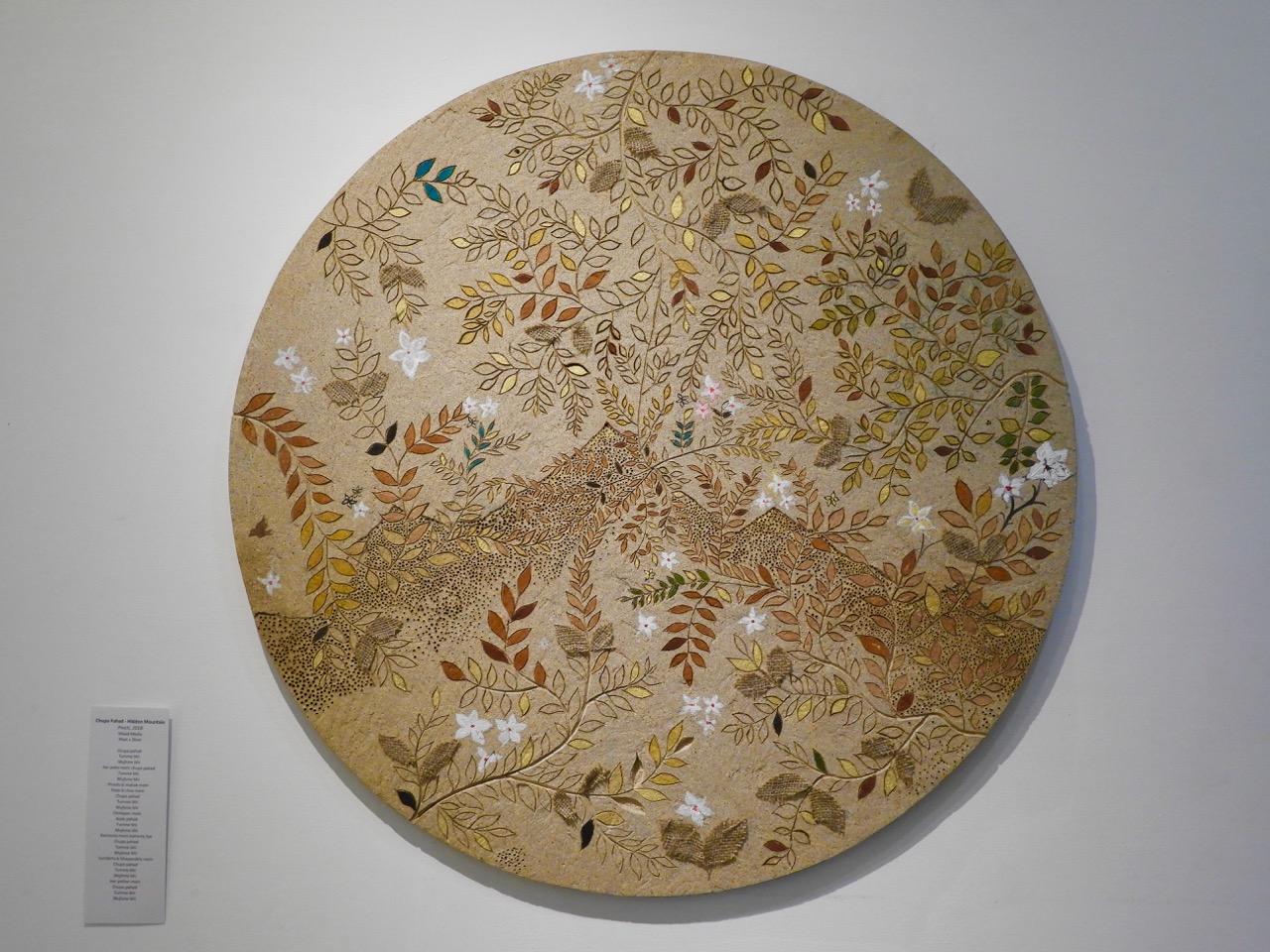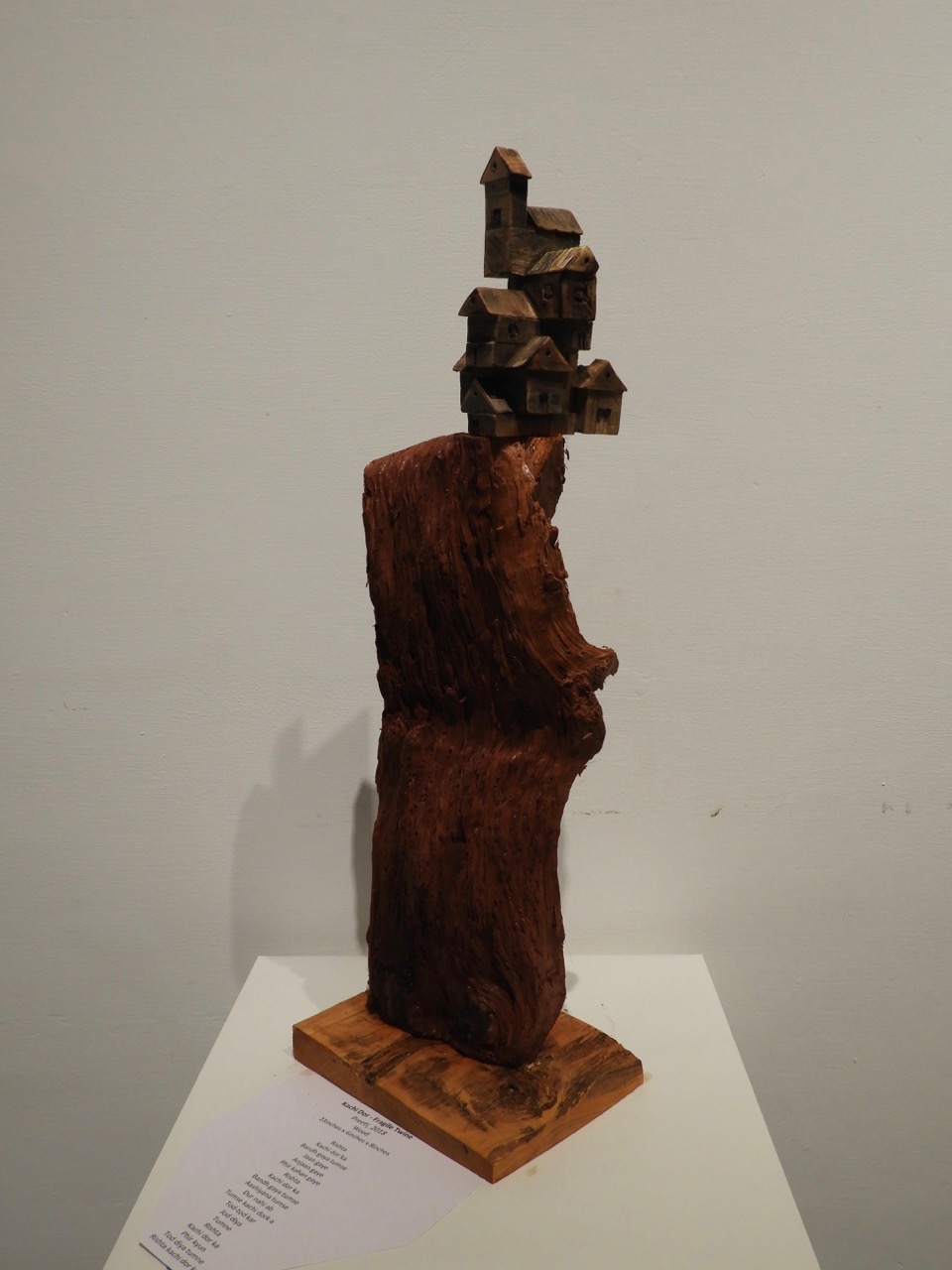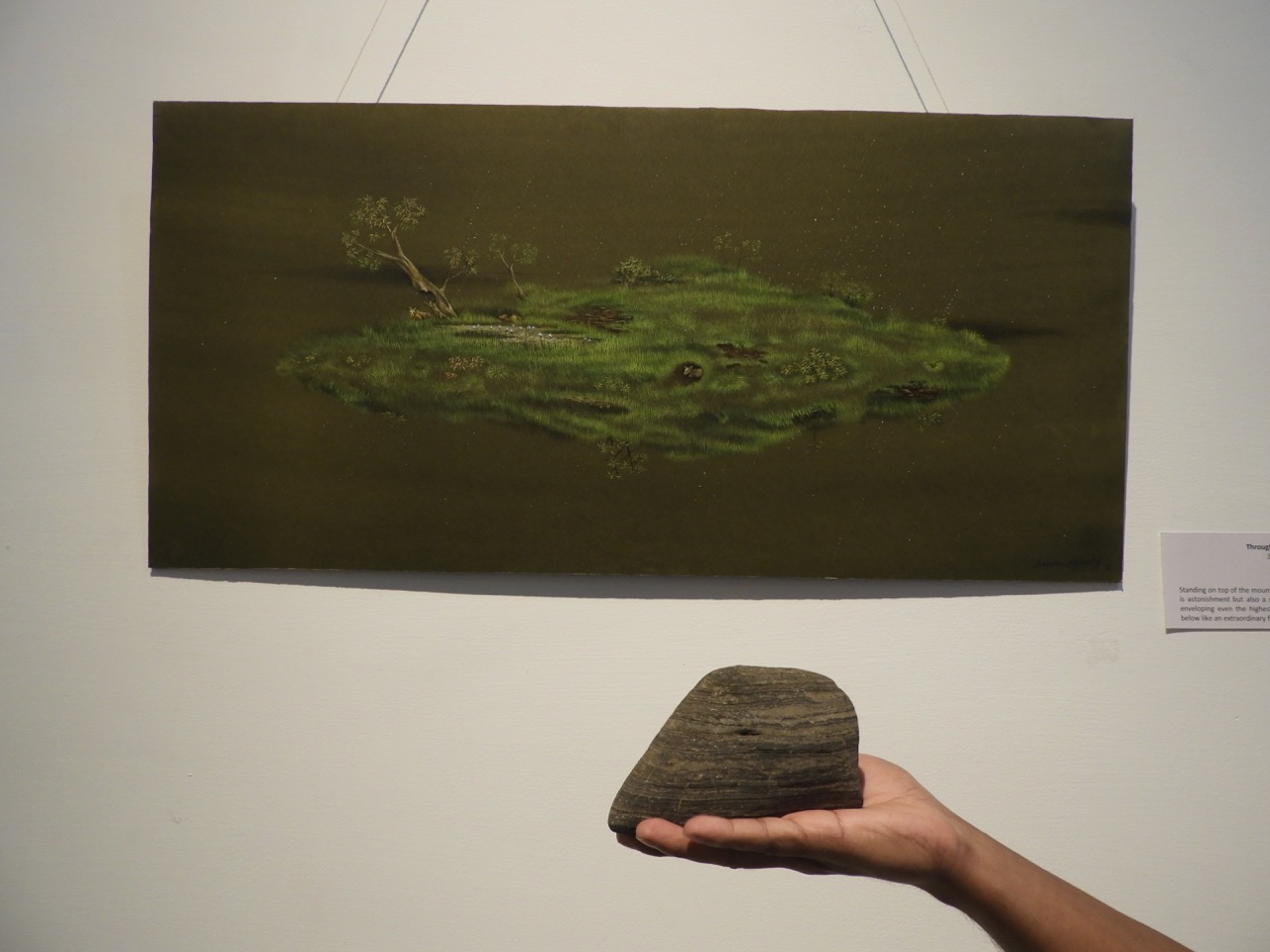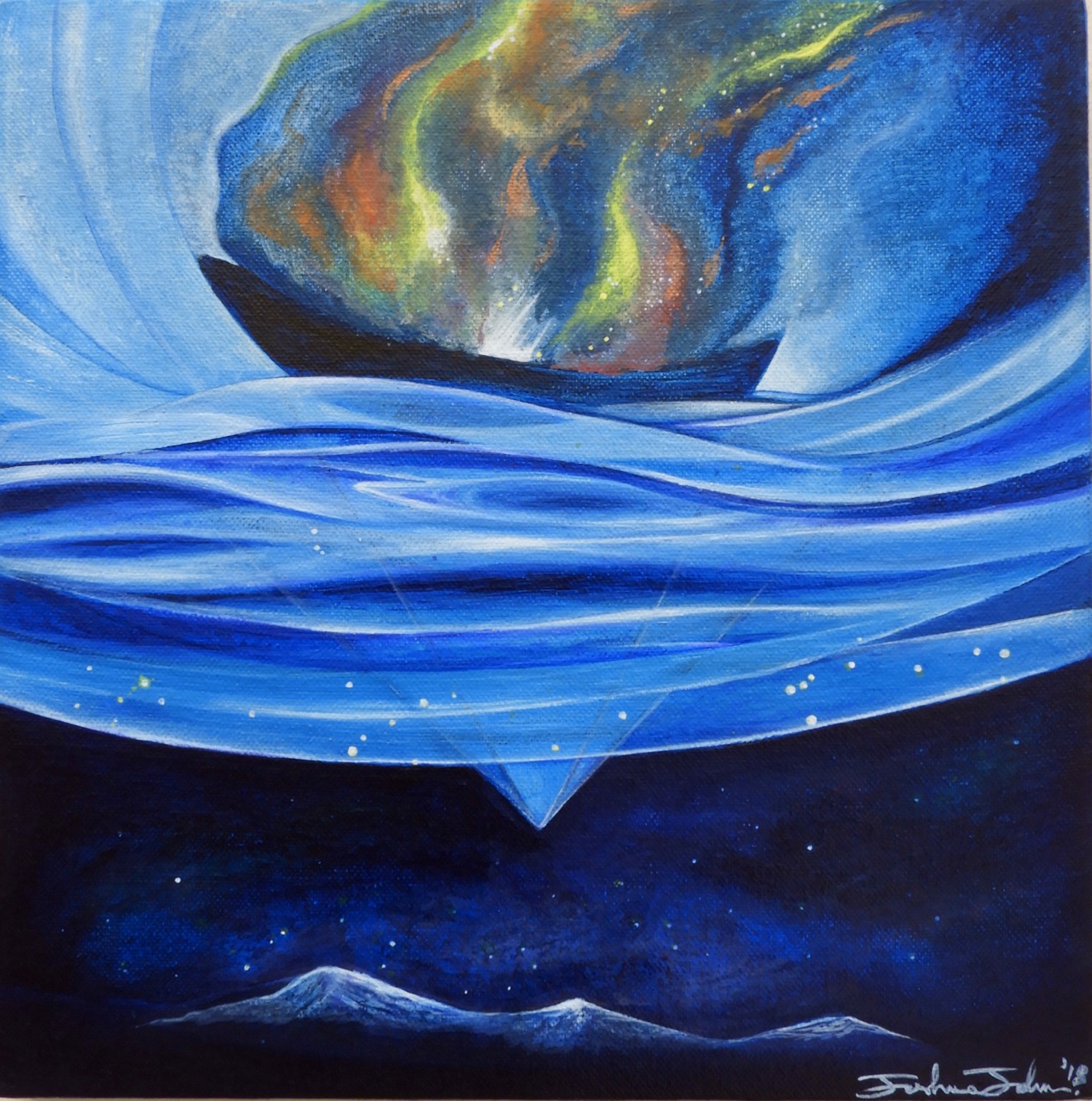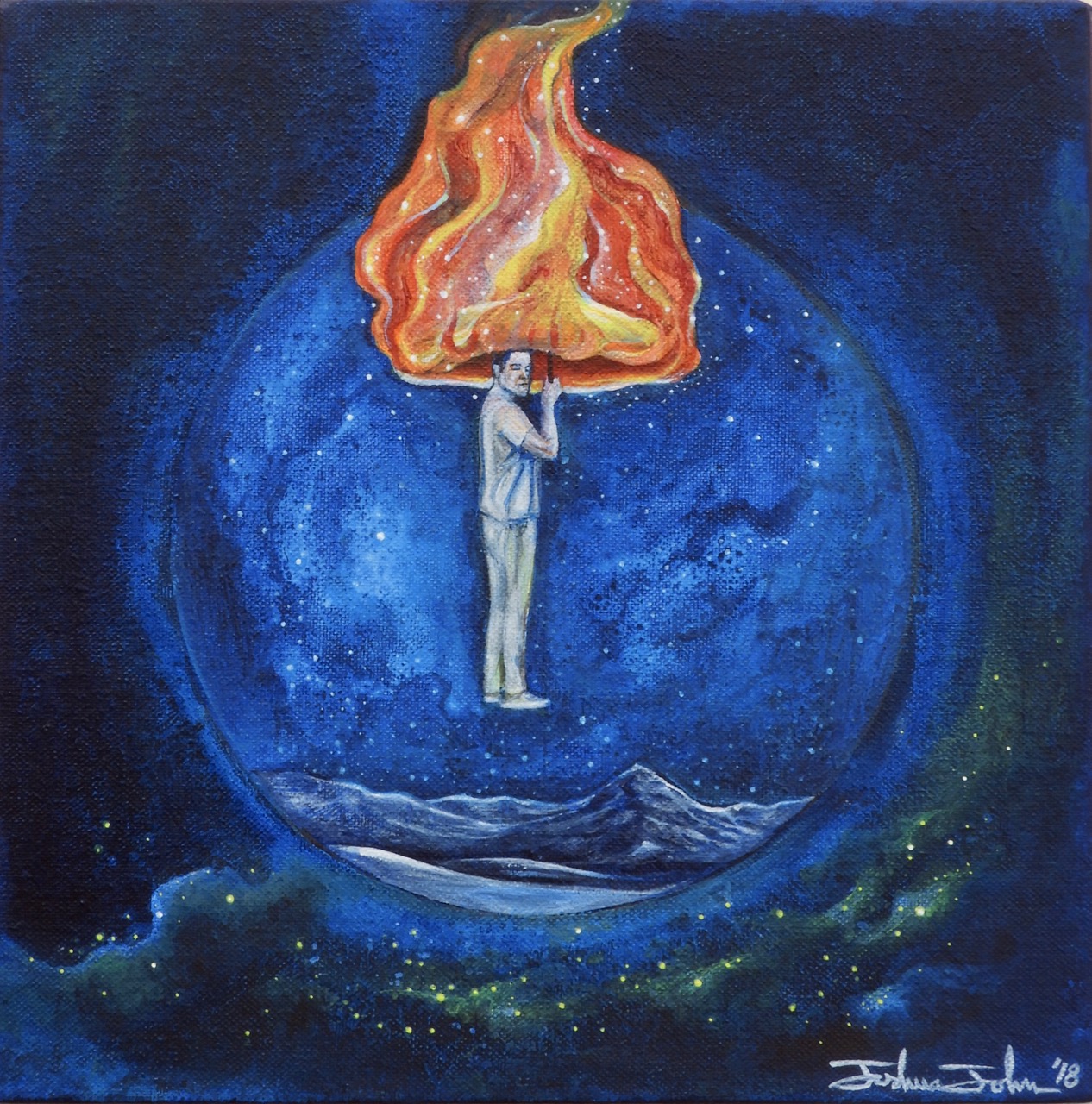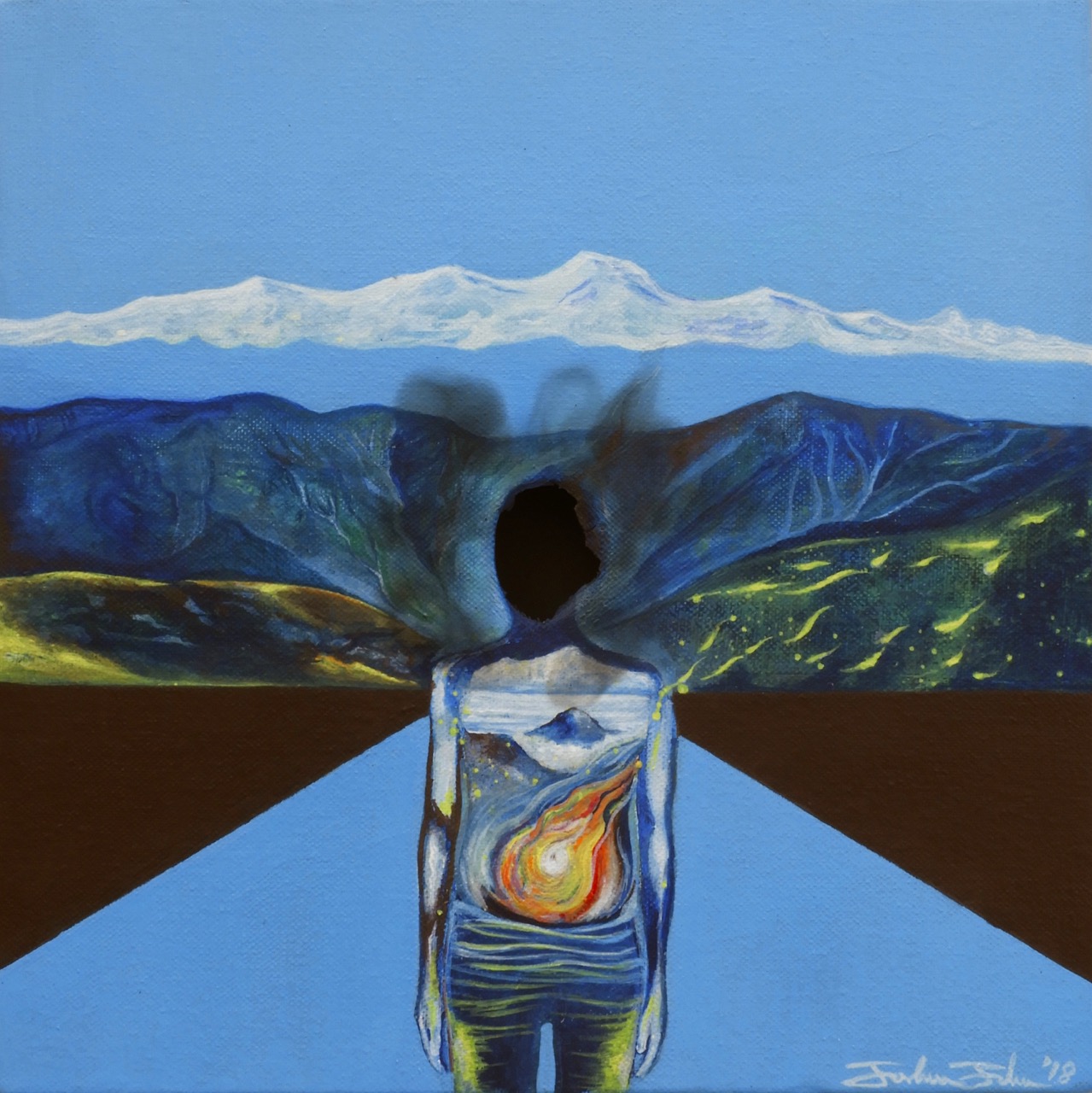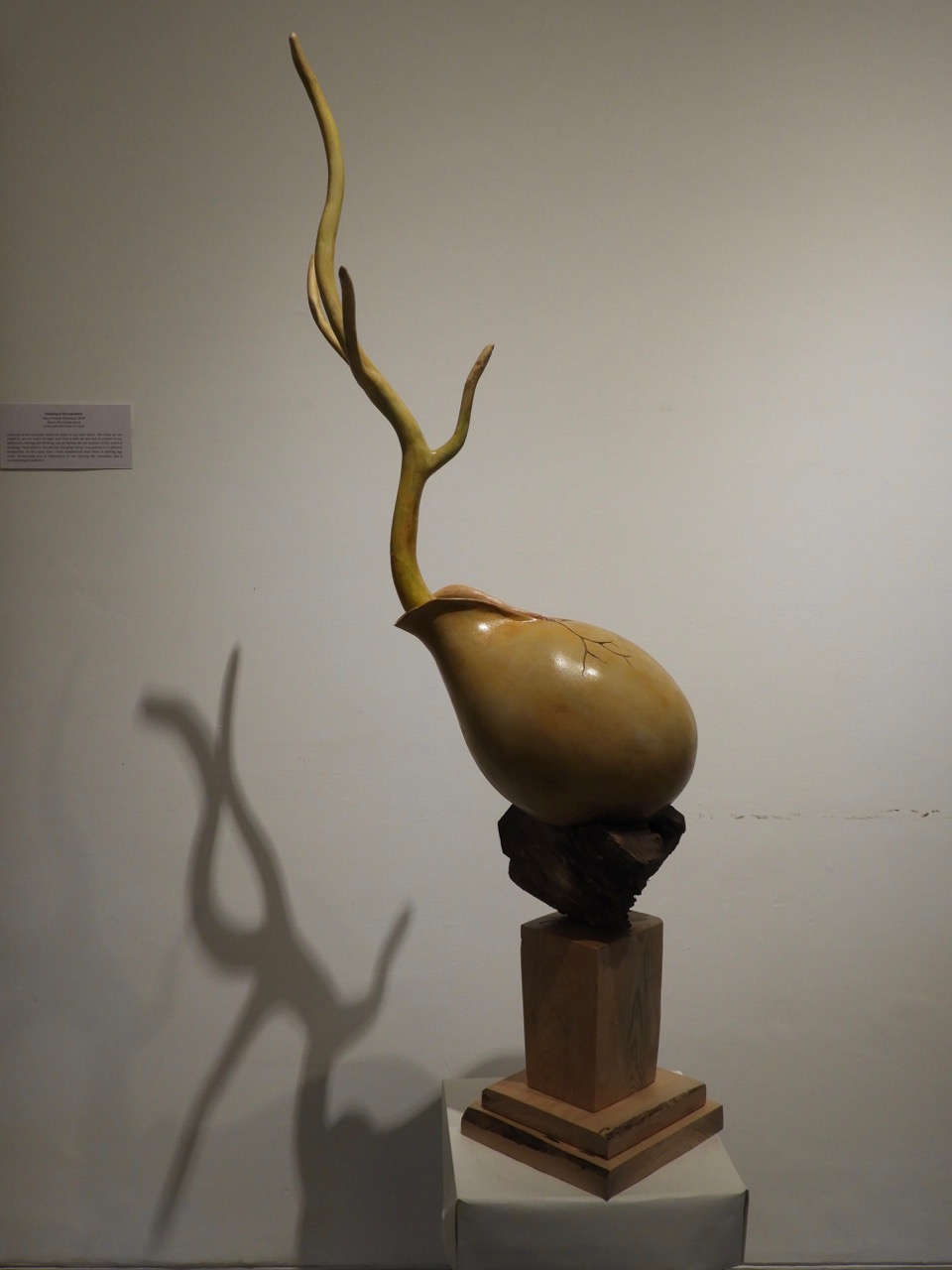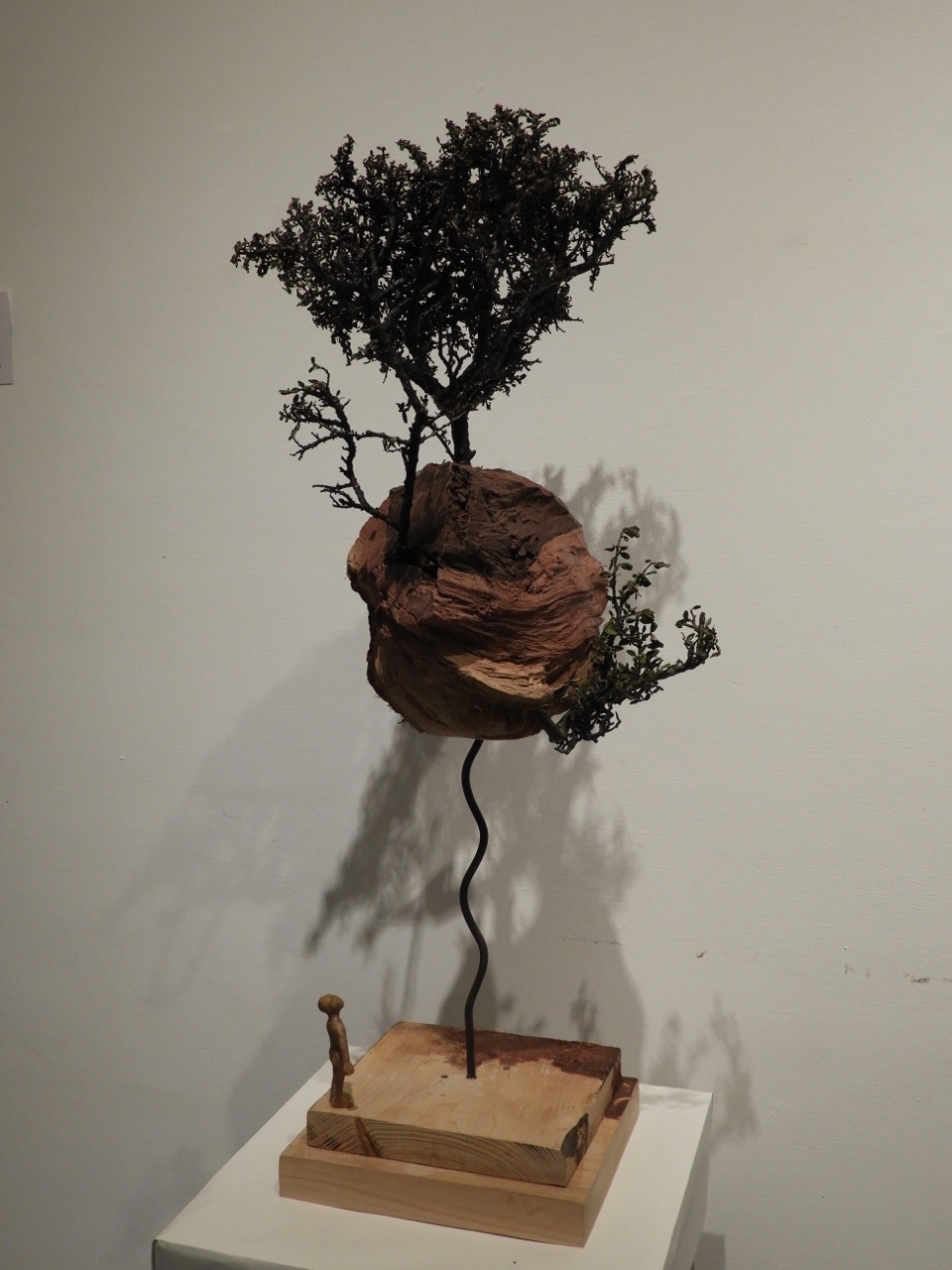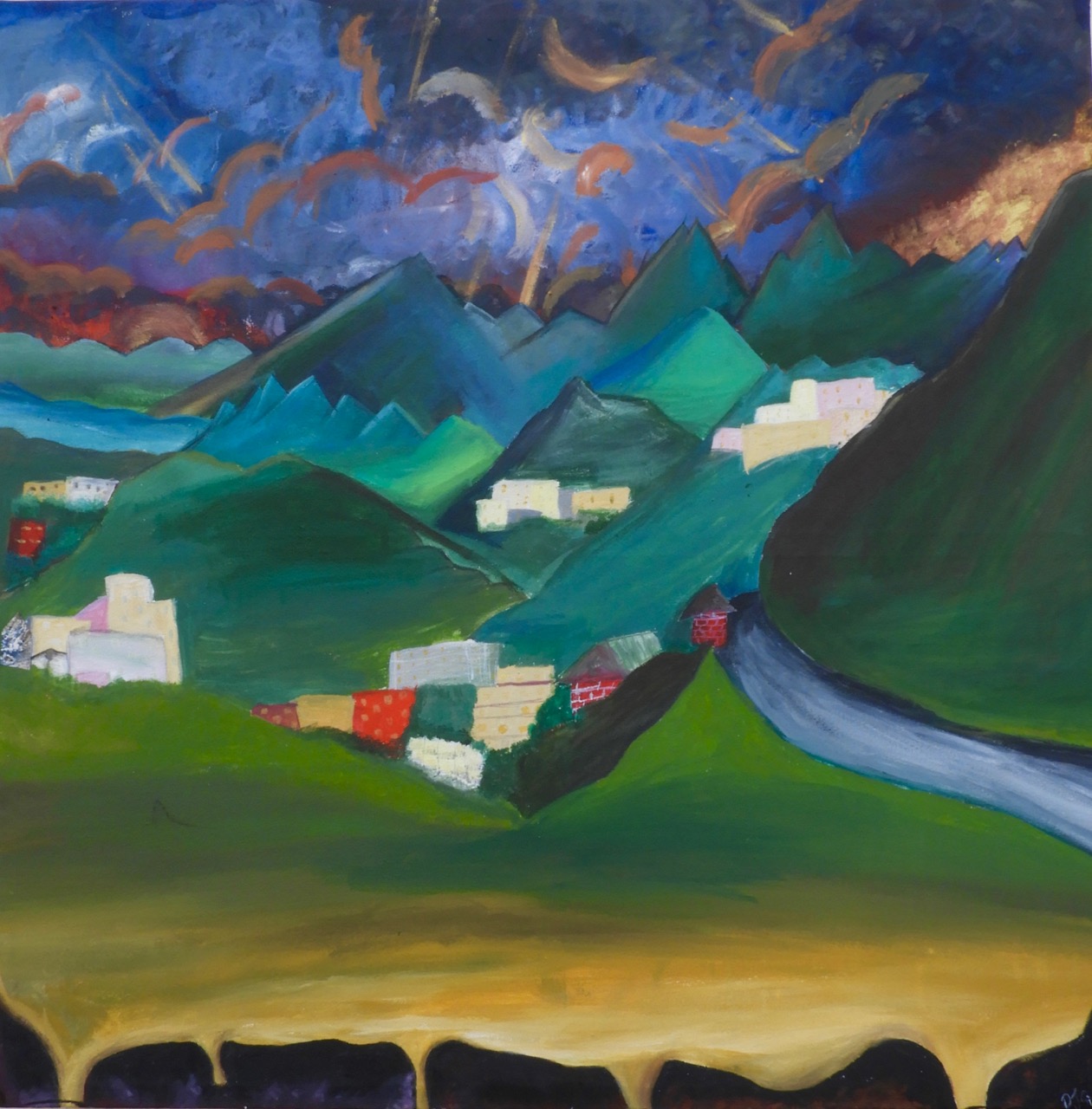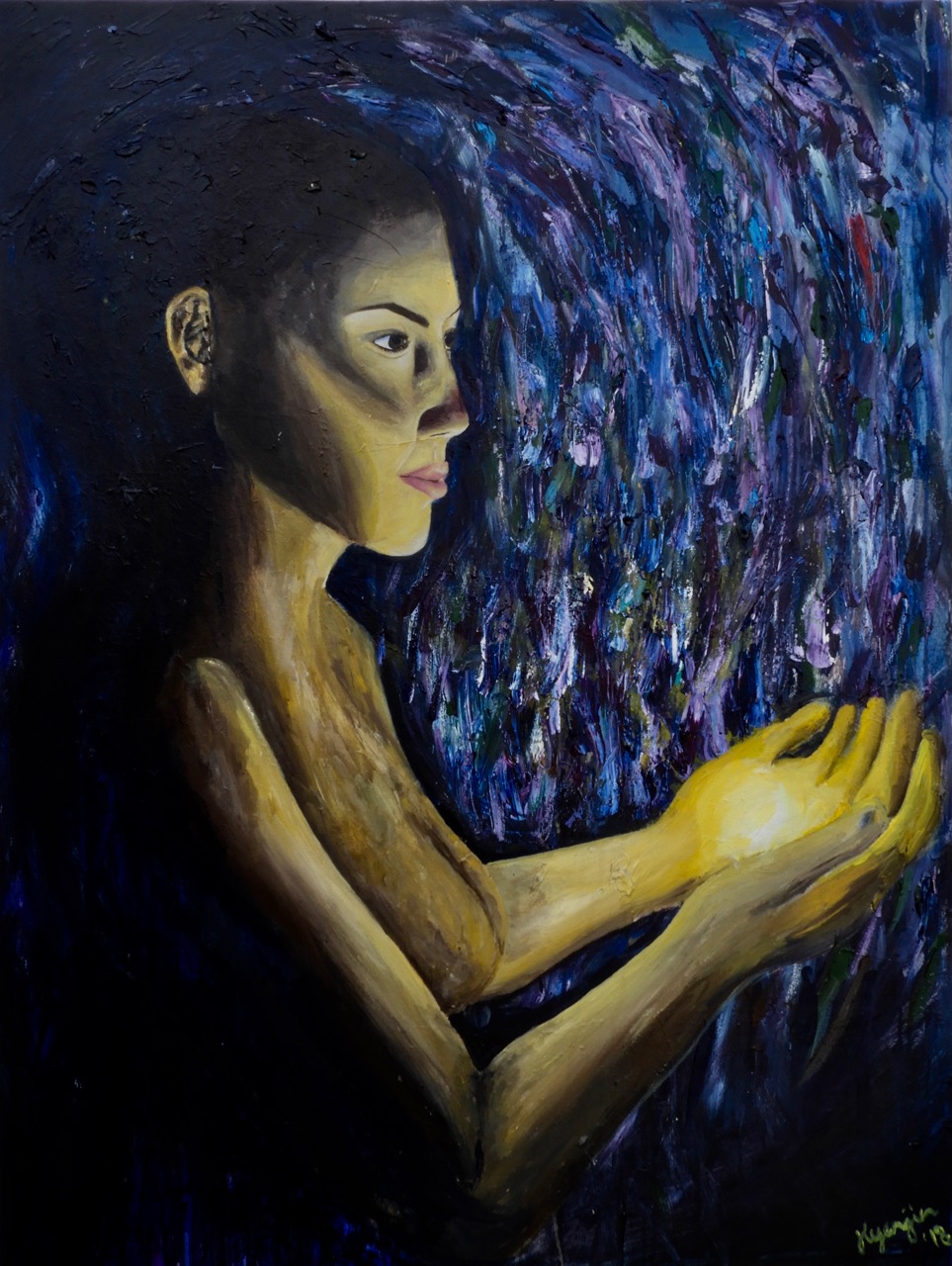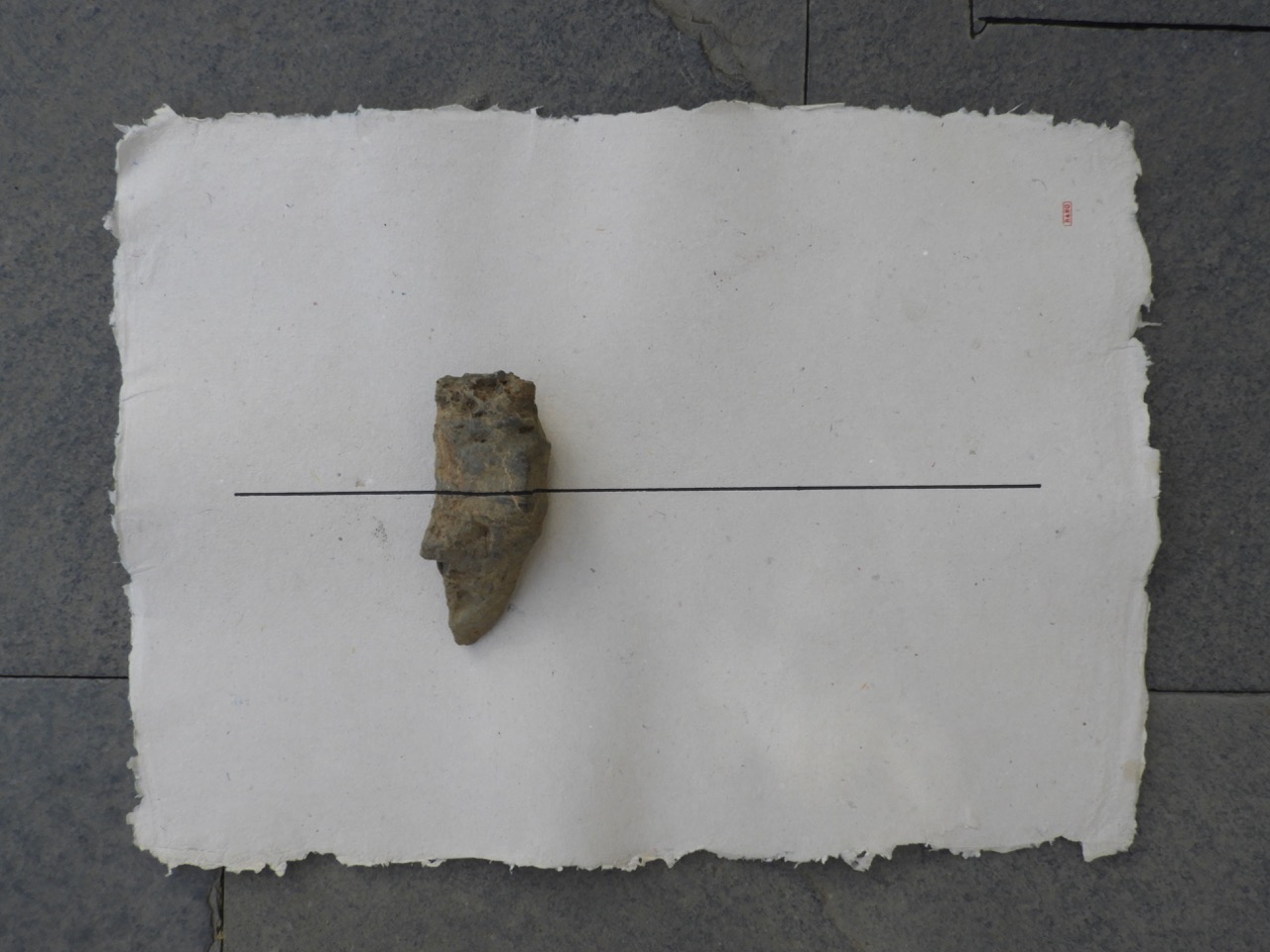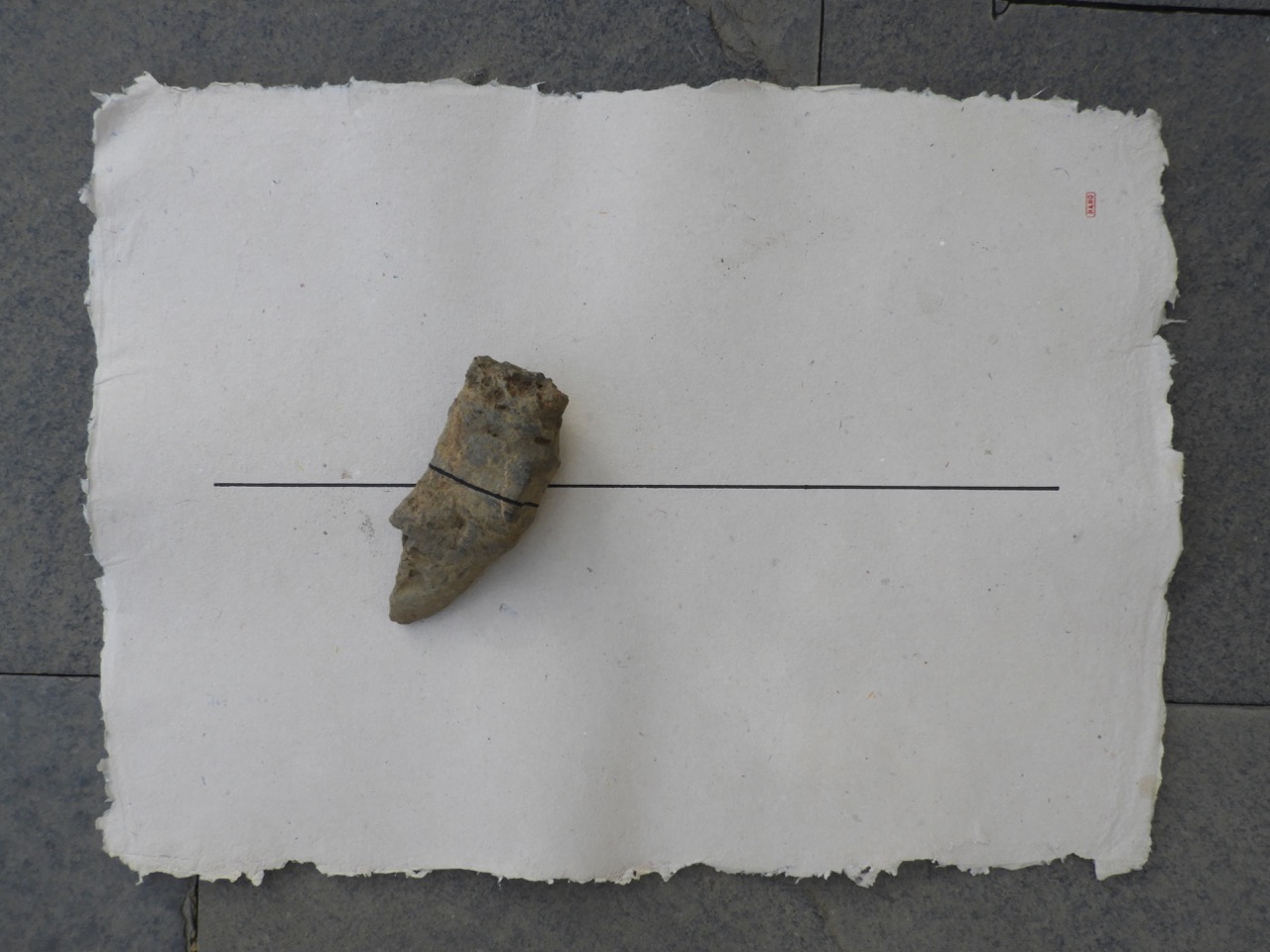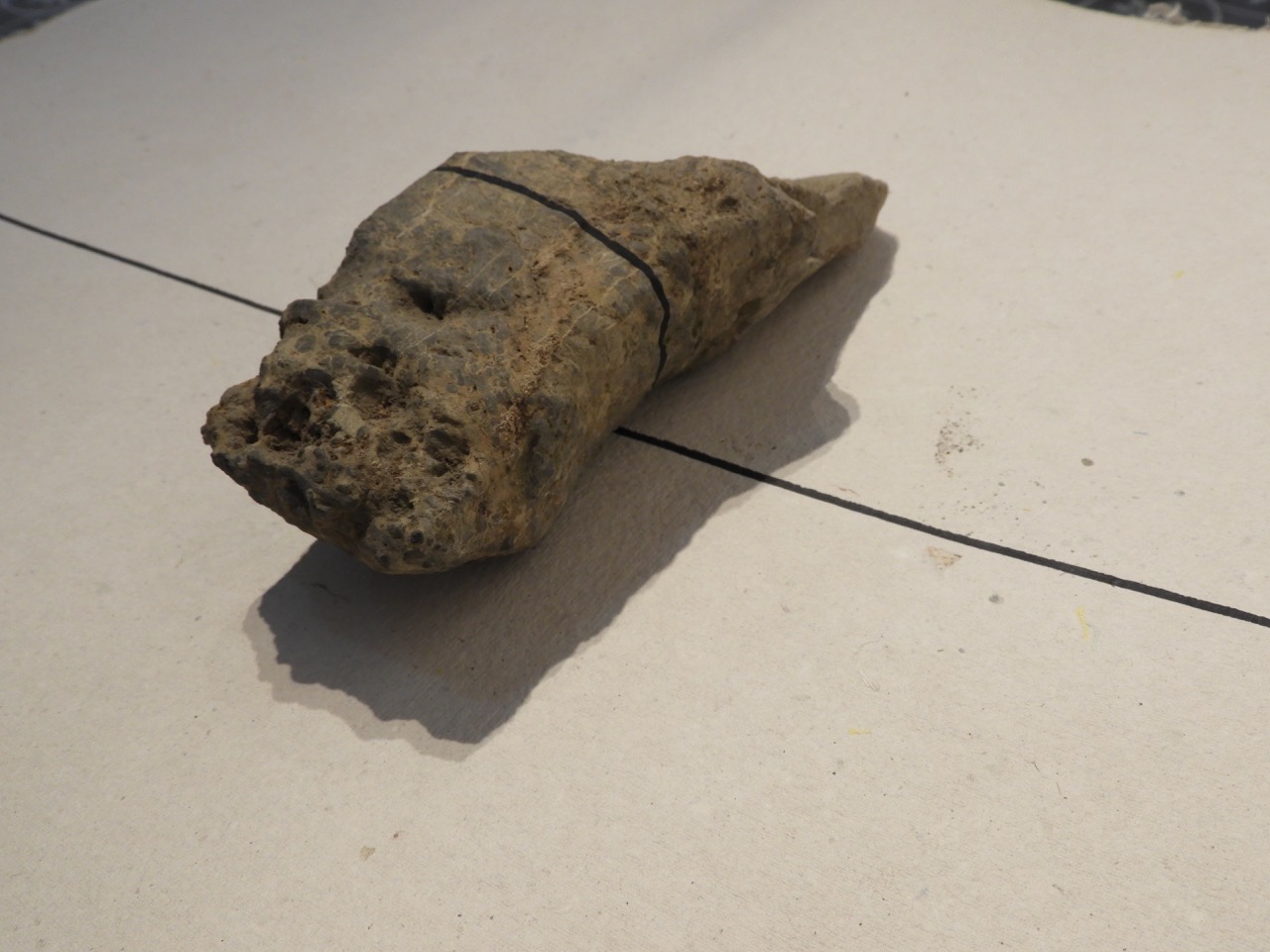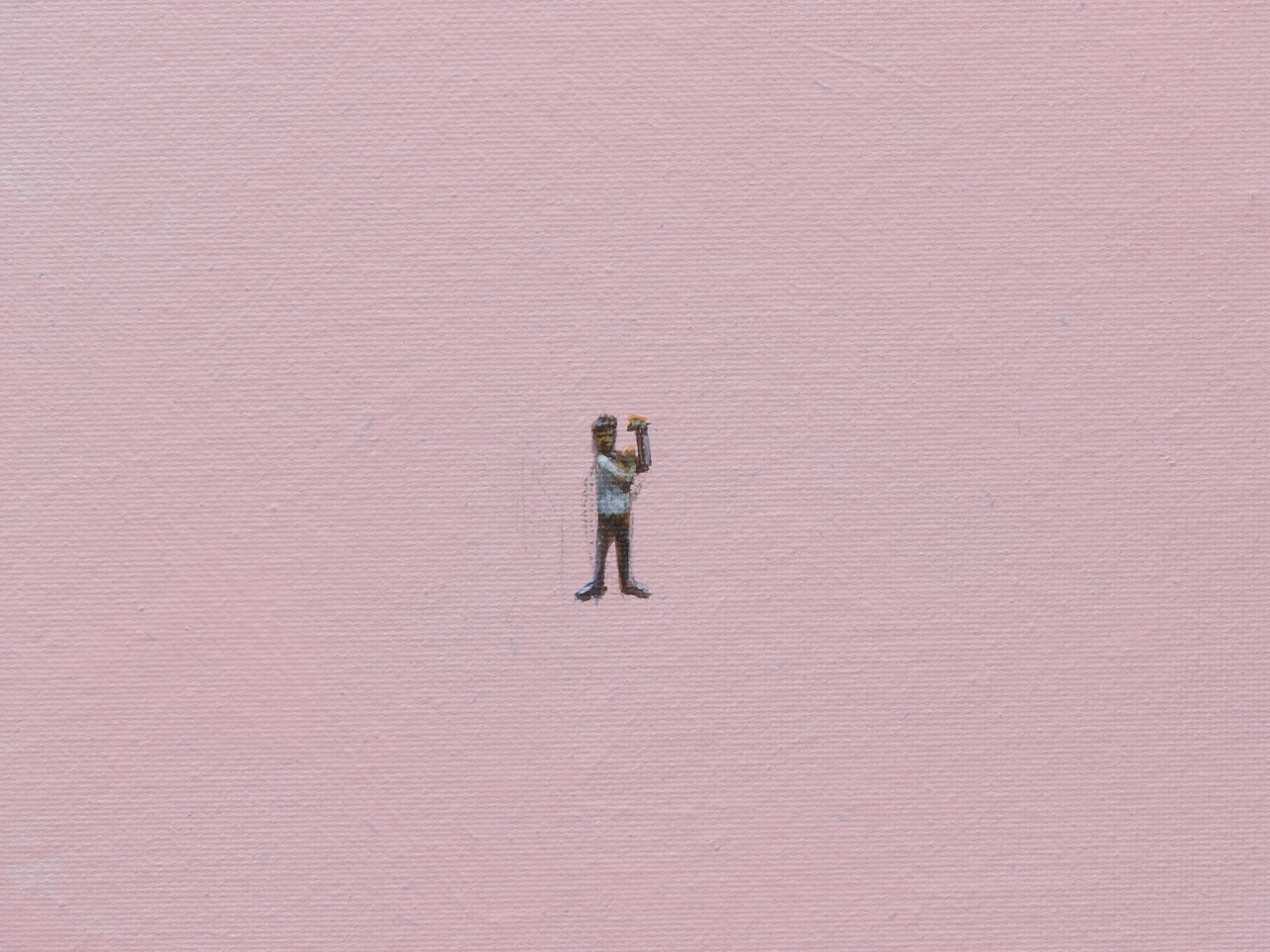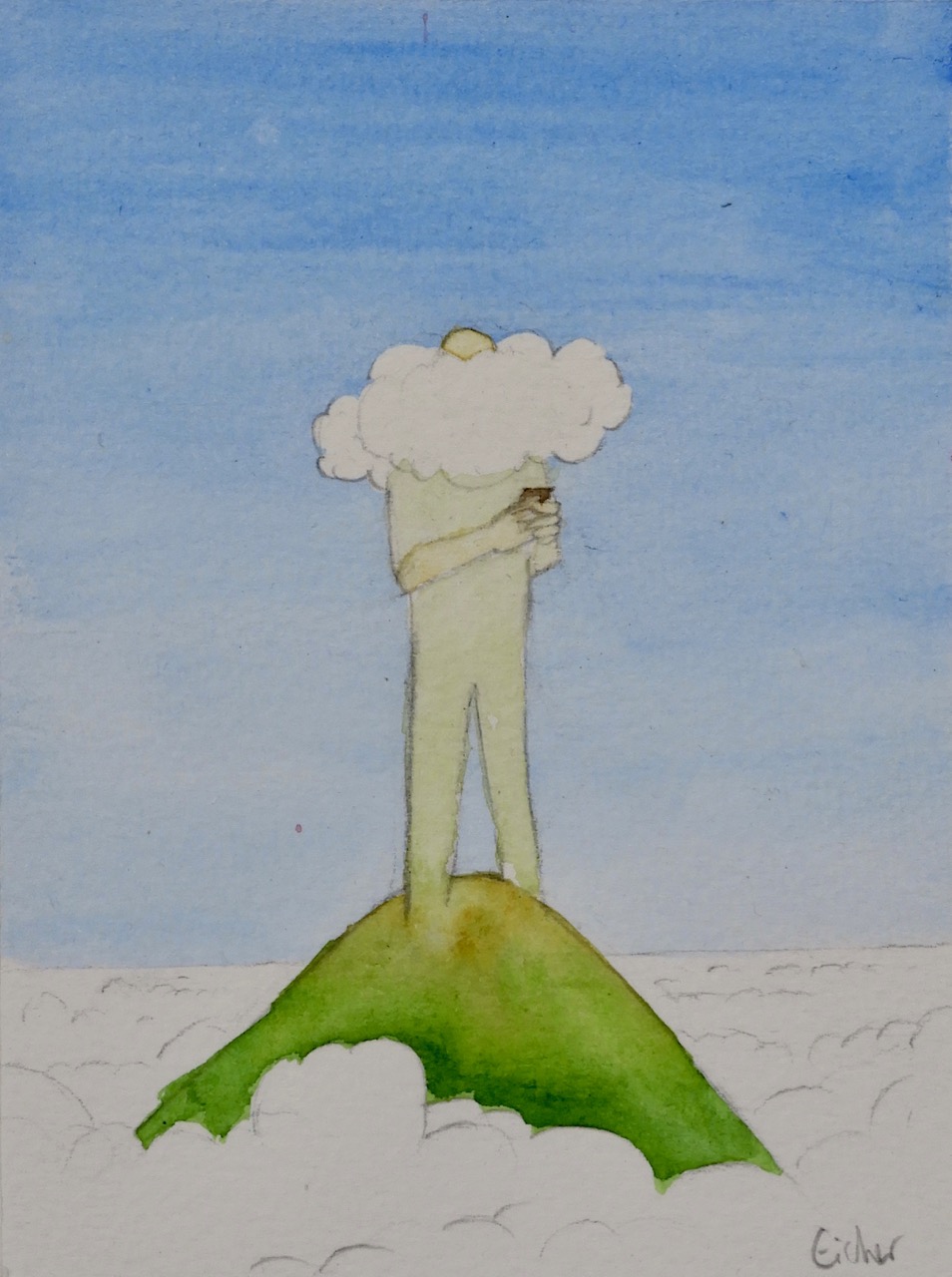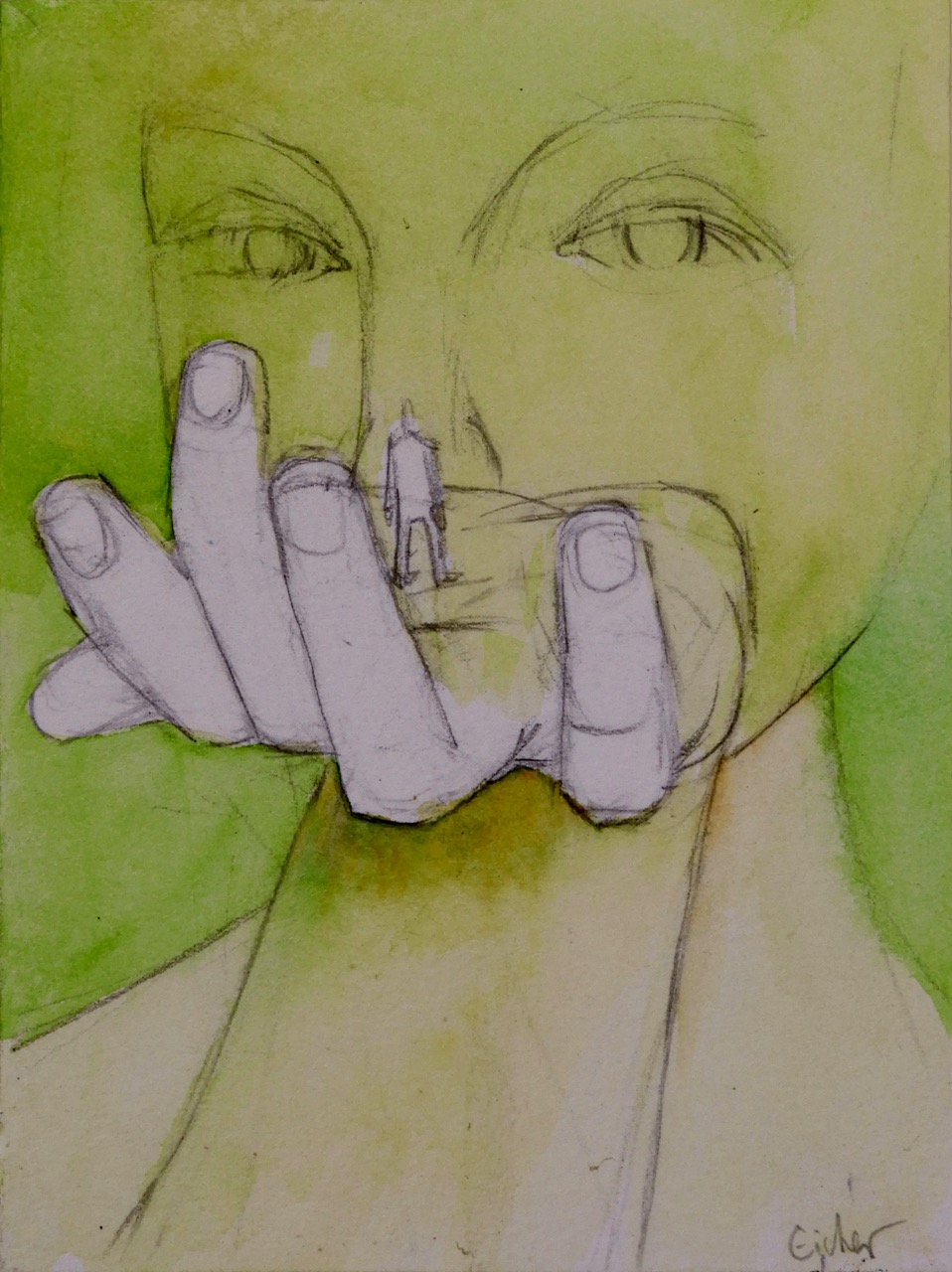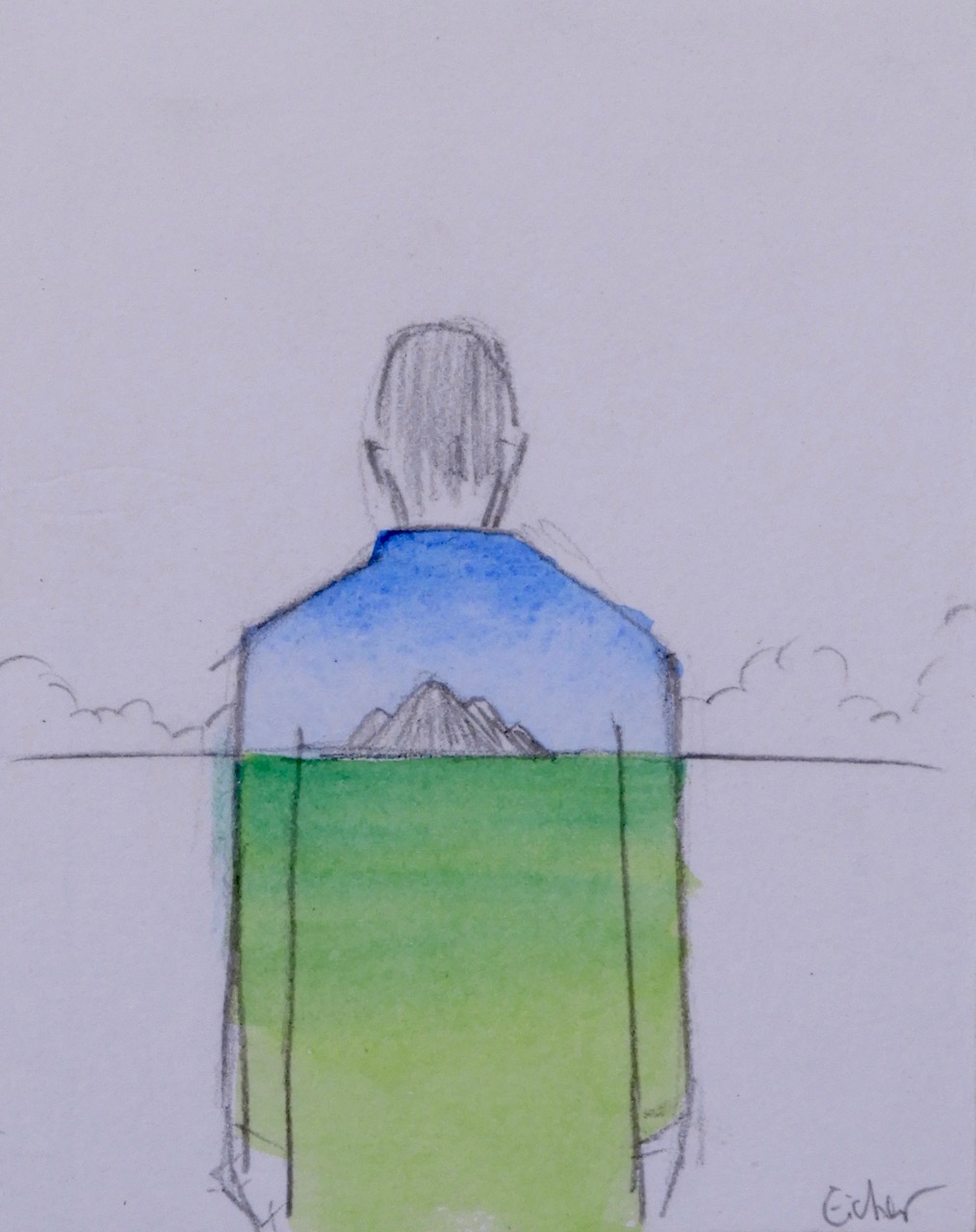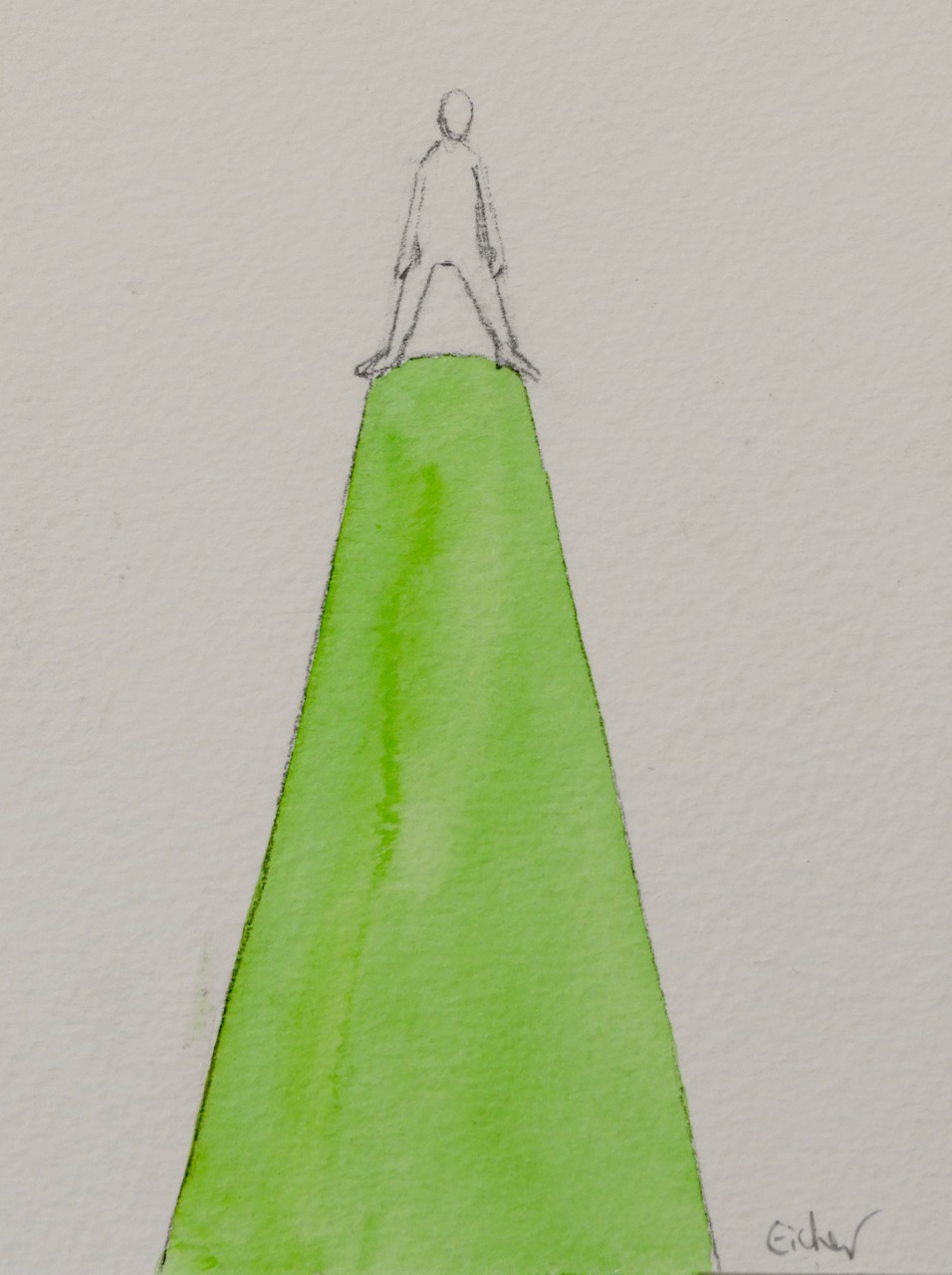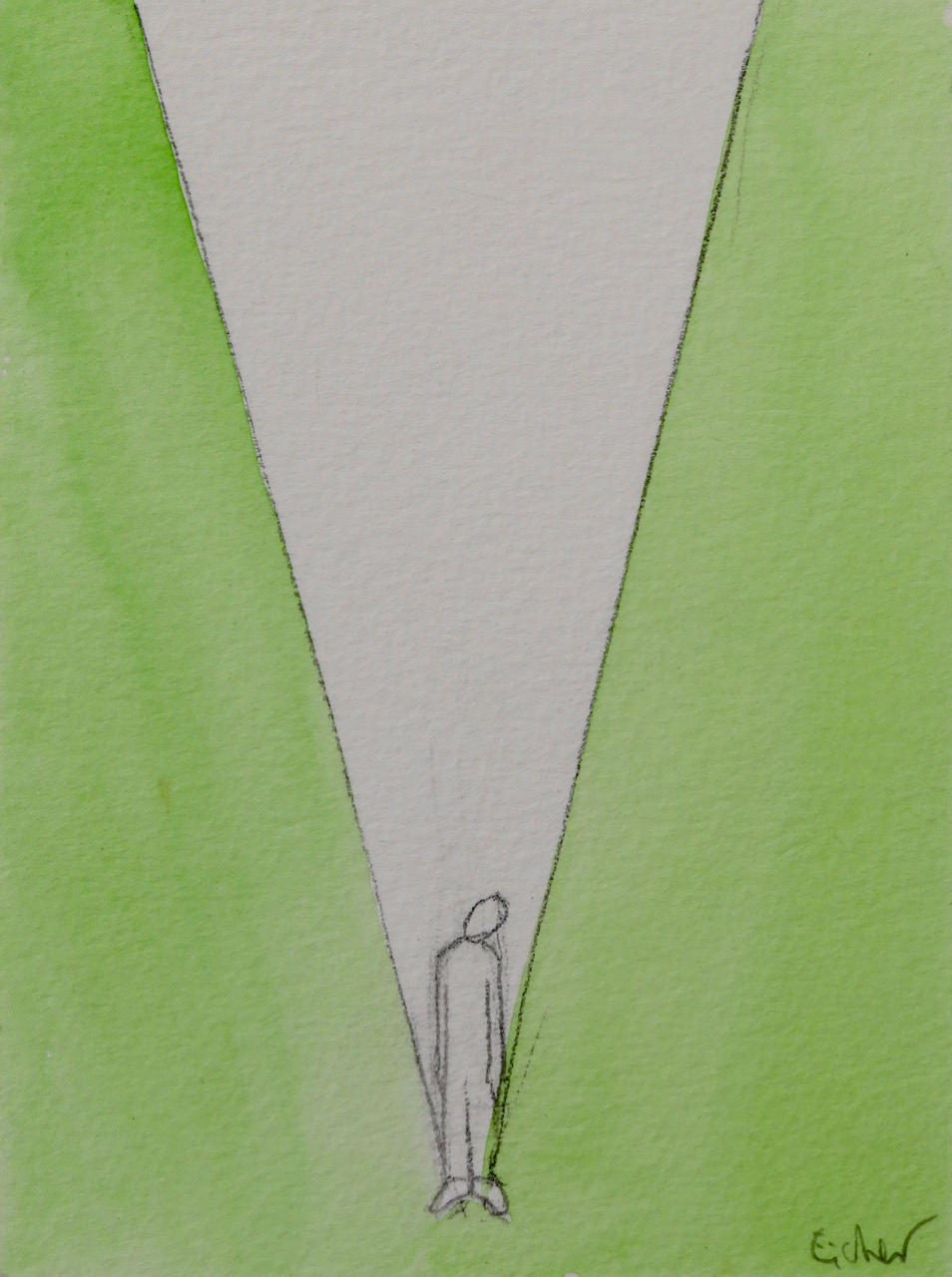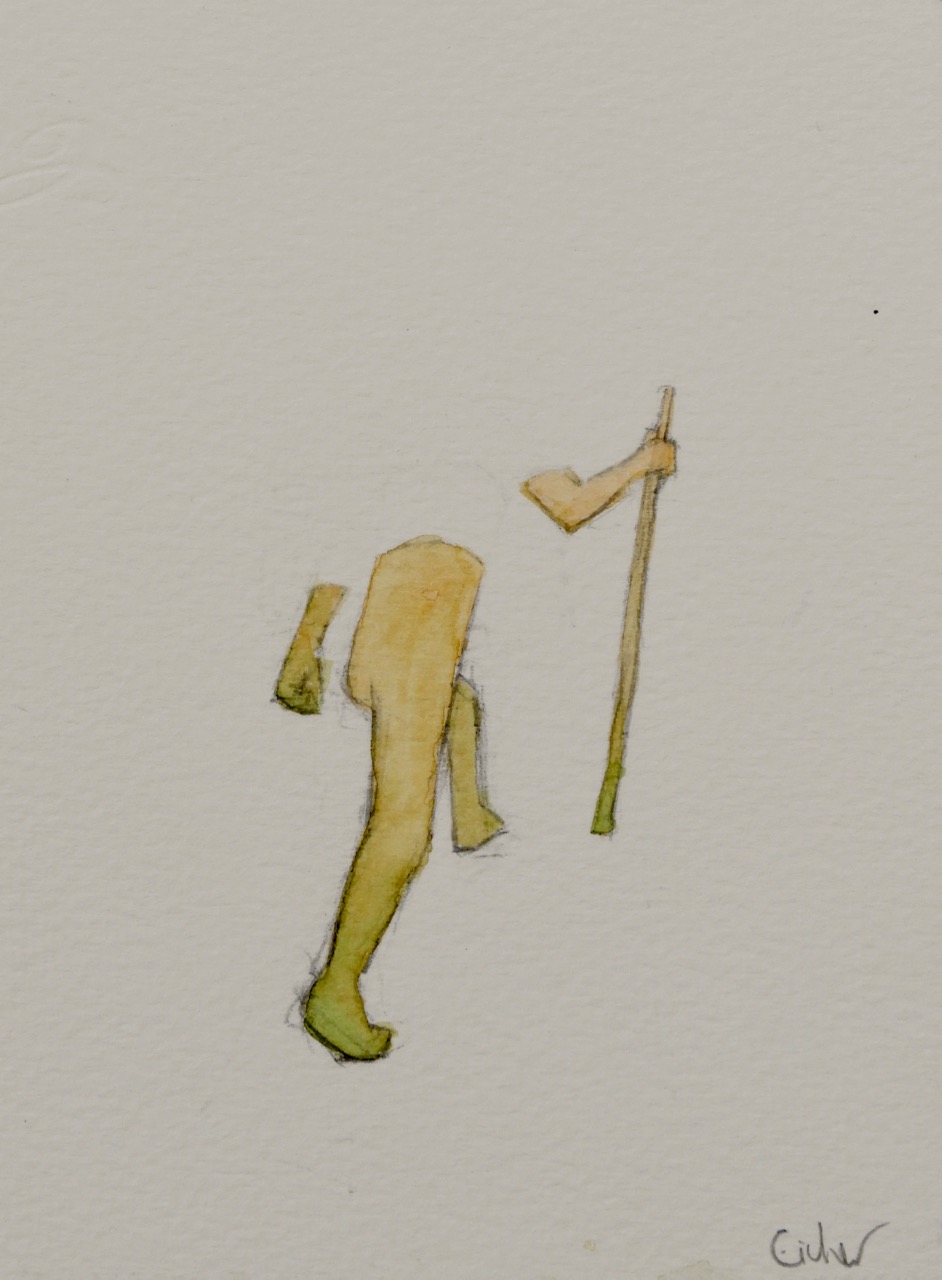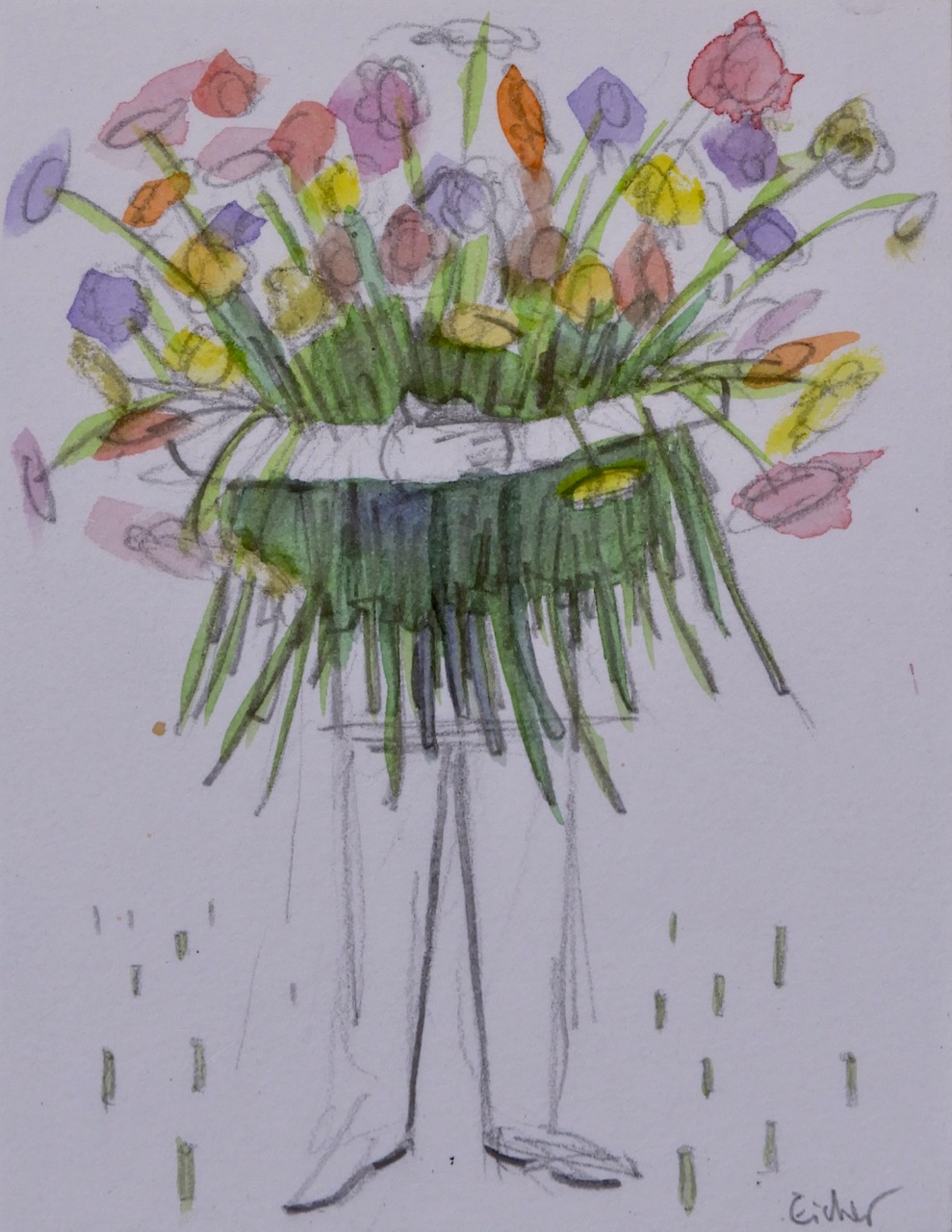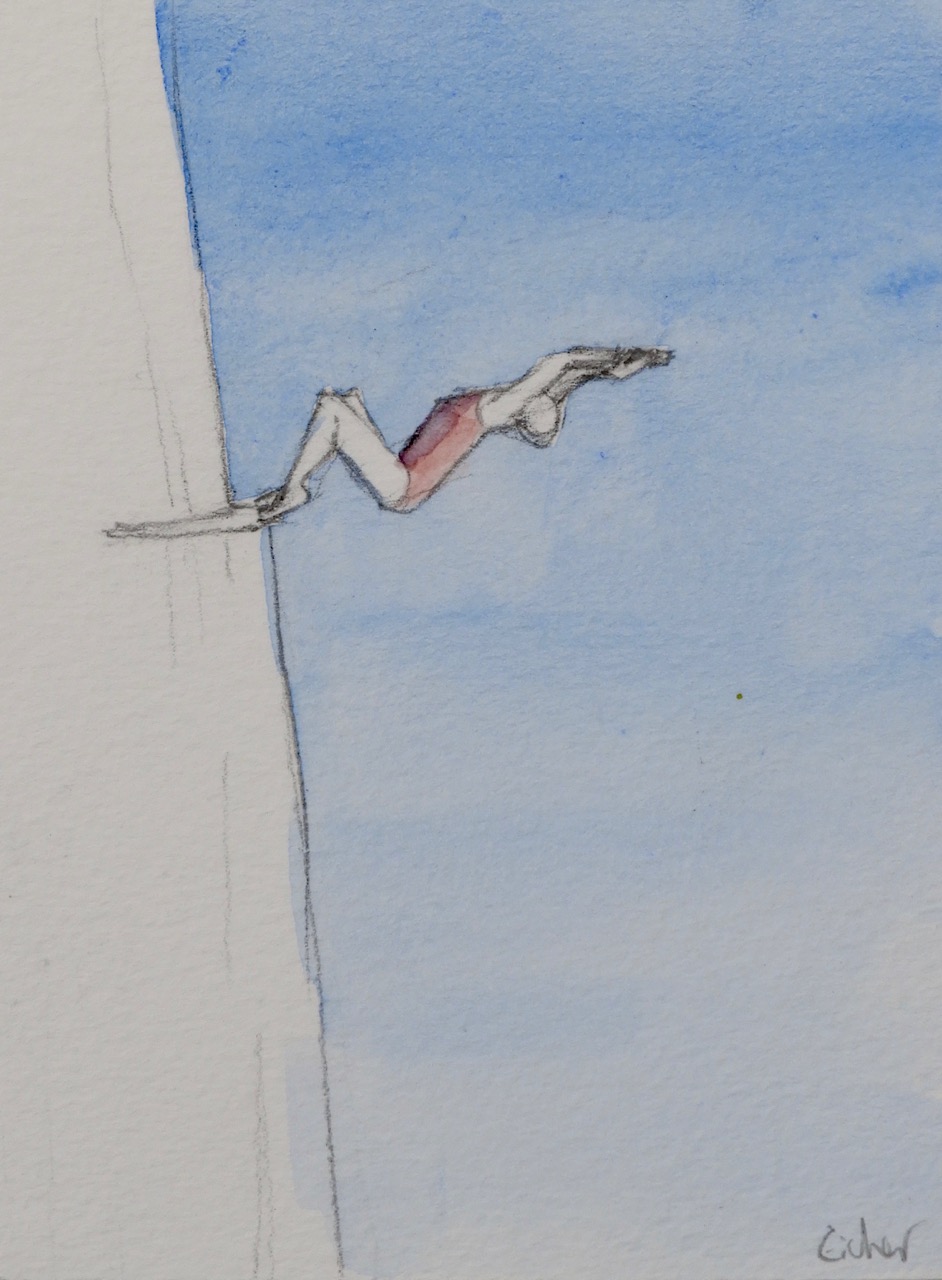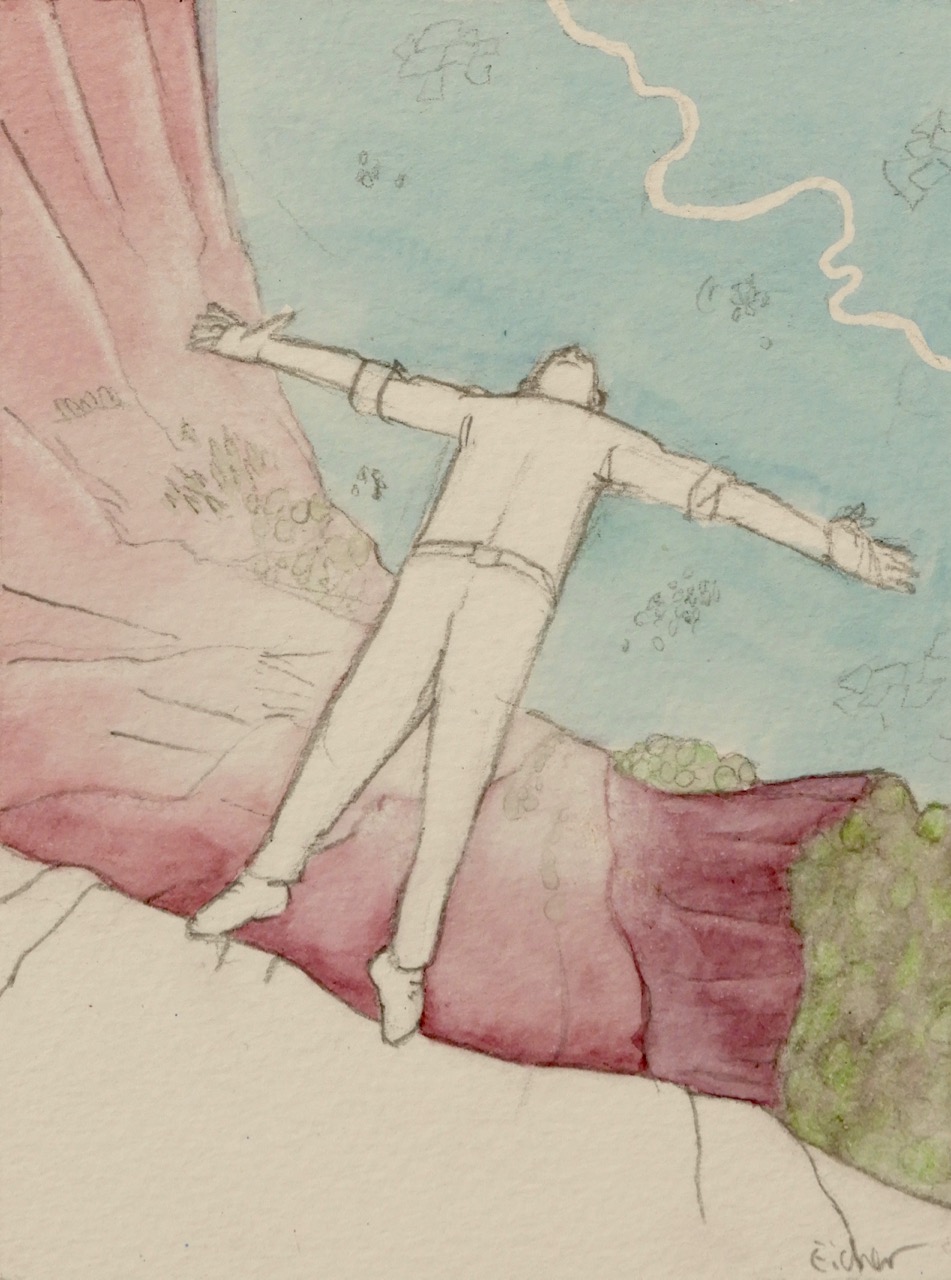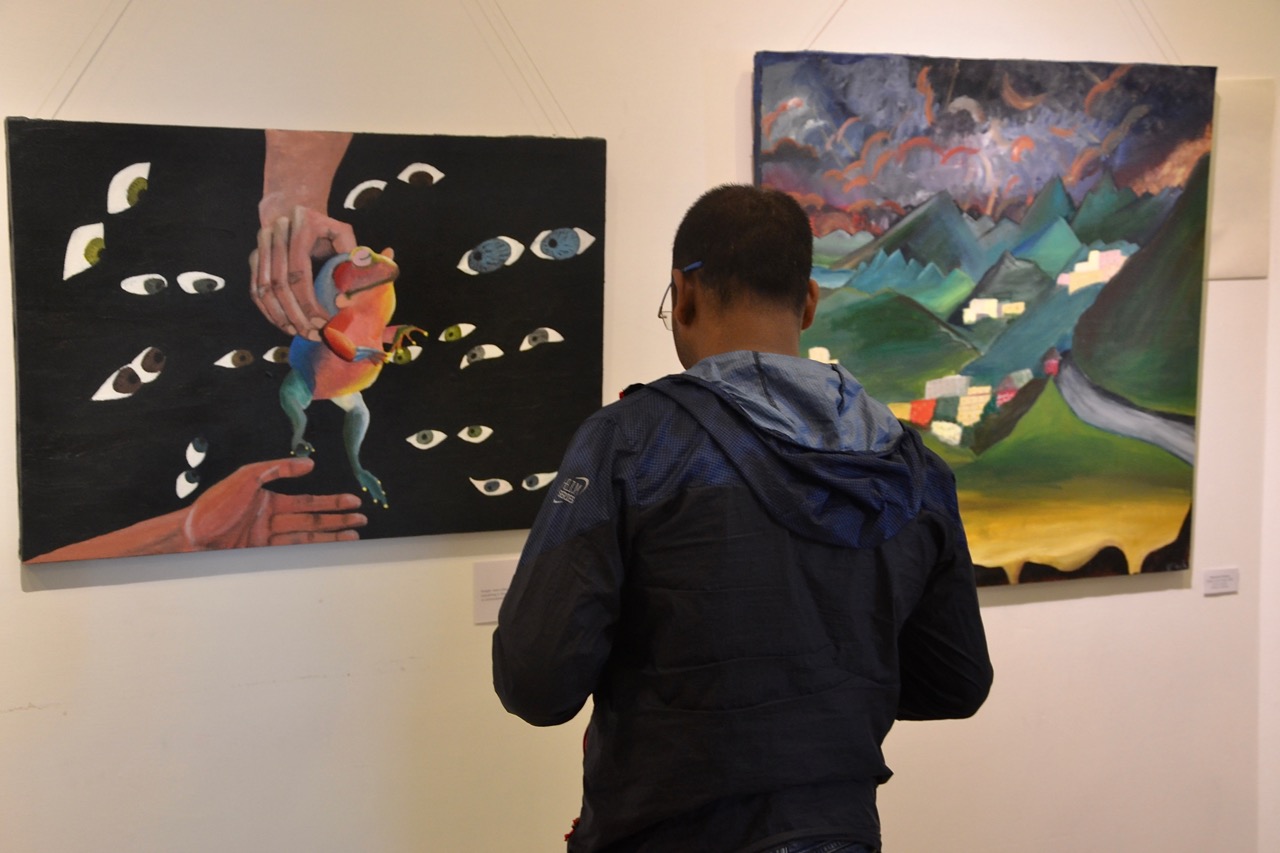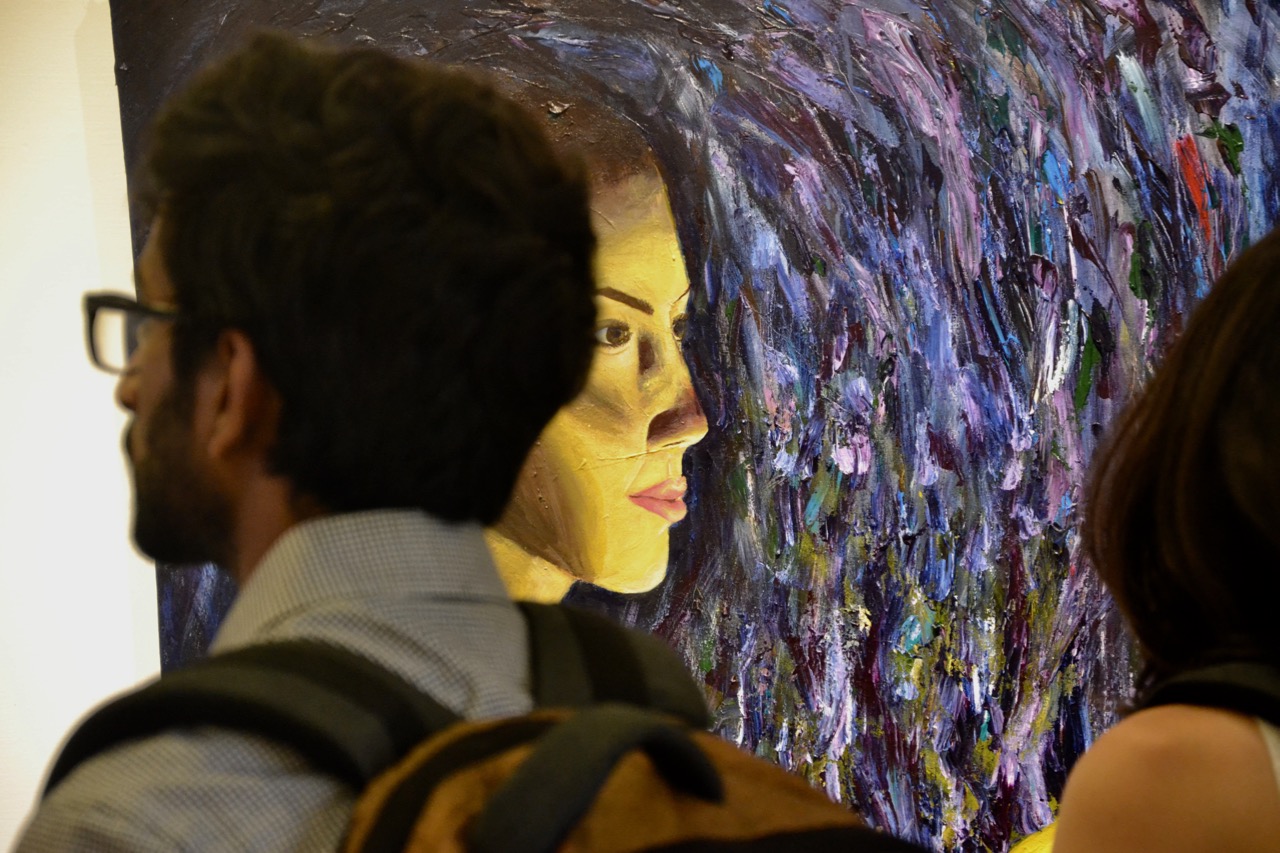“What does the mountain tell us about ourselves, and about what it means to be human?”
That was the ‘residency question’ for Art for Change’s latest 2-week artist residency organized in collaboration with Woodstock School, the international boarding school nestled in the foothills of the Himalayas.
It turns out, the mountain tells us a lot! And to get our 6 young professional artists, 5 high-school art students, and 3 residency mentors to listen closer, we kicked the residency off with a monsoon climb up a 10,000 ft mountain nearby.
There is something about the size of a mountain, and realizing how correspondingly small you are, that opens you up to that which is bigger—to the transcendent, to mystery, to gratitude, to wonder. Letting go of the control afforded by technology and urban living opens us up to mystery, to possibility, to discovery. We lost our direction on that mountain-side, and with no signal on our cellphones took a longer, round-about way. But it was a way which led us through dense forests and swirling mists, to a giant frog and the tiny acorn-sized hoofprints of the Himalayan barking deer, and to massive vistas opening up suddenly before us. That giant frog ended up reappearing in no less than 4 works of art. We experienced blankets of incessant rain and hunger, and for some who had never climbed a mountain, fear and fatigue. When asked what the mountain was telling her, a student who was falling behind replied: “That I can’t make it.” To be human means to understand we have limits, to respect them, to realize we need each other, to look above. And yet a few minutes later we came across a house clinging to the edge of the mountain, a lone Garwhali family with the matriarch resplendent in her colourful Garwhali dress and the widest smile: a picture of vulnerability and resilience, the human capacity to create culture and thrive even under the hardest of circumstances.
Over daily ‘chai-time’ discussions we unpacked these ideas and discussed our theme, Wonder. For wonder leads to so much: to the profound relationship between wonder and learning, how cultivating a sense of wonder is a key to curiosity and the discovery of a wider world. But also to empathy. Watching a video about Chinese artist Ai Weiwei’s response to the refugee crisis led to a discussion about how wonder makes us curious about other people’s stories, how imagination is at the heart of both creativity and the ability to place ourselves in other people’s shoes.
And so for the next two weeks we kept hiking. From our dorm rooms down the hill to the cafeteria for breakfast, from the cafeteria up the hill to the art department, from the art department back down again for lunch, and so on. And as we hiked, the mountain continued to inspire.
Chimmi a Woodstock Student from Bhutan recreated a miniature house hanging inexplicably on the edge of a pedestal as if in mid-air, titled ‘Resilient’. Komal, a student from St.Joseph’s Academy Dehradun painted a man crouching in the corner of the canvas training a big camera on a small frog. Behind him the saturated green of a sheer mountainside rises up, and beyond that, a cosmic kaleidoscope. She titled the piece ‘Perspective’. Tanuprakash Khandual from Odisha responded each day to a different question he heard the mountain asking him, producing a series of work that combined miniature watercolours with triangular forms of the mountain drawn with smoke. And then there was Rangskhembor Mawblei from Meghalaya, who spent much of the two weeks hanging around outside in the rain, making us wonder till the last moment if he was going to have anything to show. He ended up with a profoundly poetic set of work using the Mussoorie rain to bleed lines of ink into sublime comments about the course of a human life. And of course there were more.
With Woodstock School giving us access to their excellent facilities we ended the residency with a professional exhibition on campus titled “Wonder: Listening to the Mountain.” Significant crowds from the school and the hillside turned out for the opening, and the Vice-principal, surprised at the quality of art we produced, asked how long the show would be up. “Two weeks” we said. “That’s great because with parents dropping their kids off this weekend it will make us feel so proud as a school.”
We ended the exhibition evening, and our residency, as a circle of artists surrounded by our artwork, and responding to the question: “What are you taking away with you from this experience?” Samir Mohanty, a deeply thoughtful and incredibly skilled artist from Odisha, for whom this was his second Art for Change residency, put it this way: “Art for Change Residency is one of the best residencies in the world. I have done Bachelors, I have done Masters, and then I have done Art for Change. It is like a 4-5 year course, I have learned so many things.”
Core to the design of our collaboration with Woodstock was giving students still in high-school a professional experience alongside professional artists just a few years on the other side of art school. Each morning two participants presented their art journeys, opening up their lives to the students. One of the students, essentially a musician but with a surprising knack as a visual artist, had half-way through the residency declared her decision to add art as a major when she goes to college next year. In our closing circle, what she was taking away with her was this: “For me I really realized during these past two weeks that I want to be an artist, I know that I want to be a creator. With my life I want to be creating things, and art is communication and I love communicating through art, whether music, writing, or painting. What made this happen here was being surrounded by other people who are creating a living by creating art, which was veryinspiring for me.”
One of our core goals as Art for Change is to enable the artists we work with, to help them find their place in society and thrive, and to recognize how their art fits into a larger scheme of things. And we are grateful to the mountain for profoundly helping us in this pursuit.

